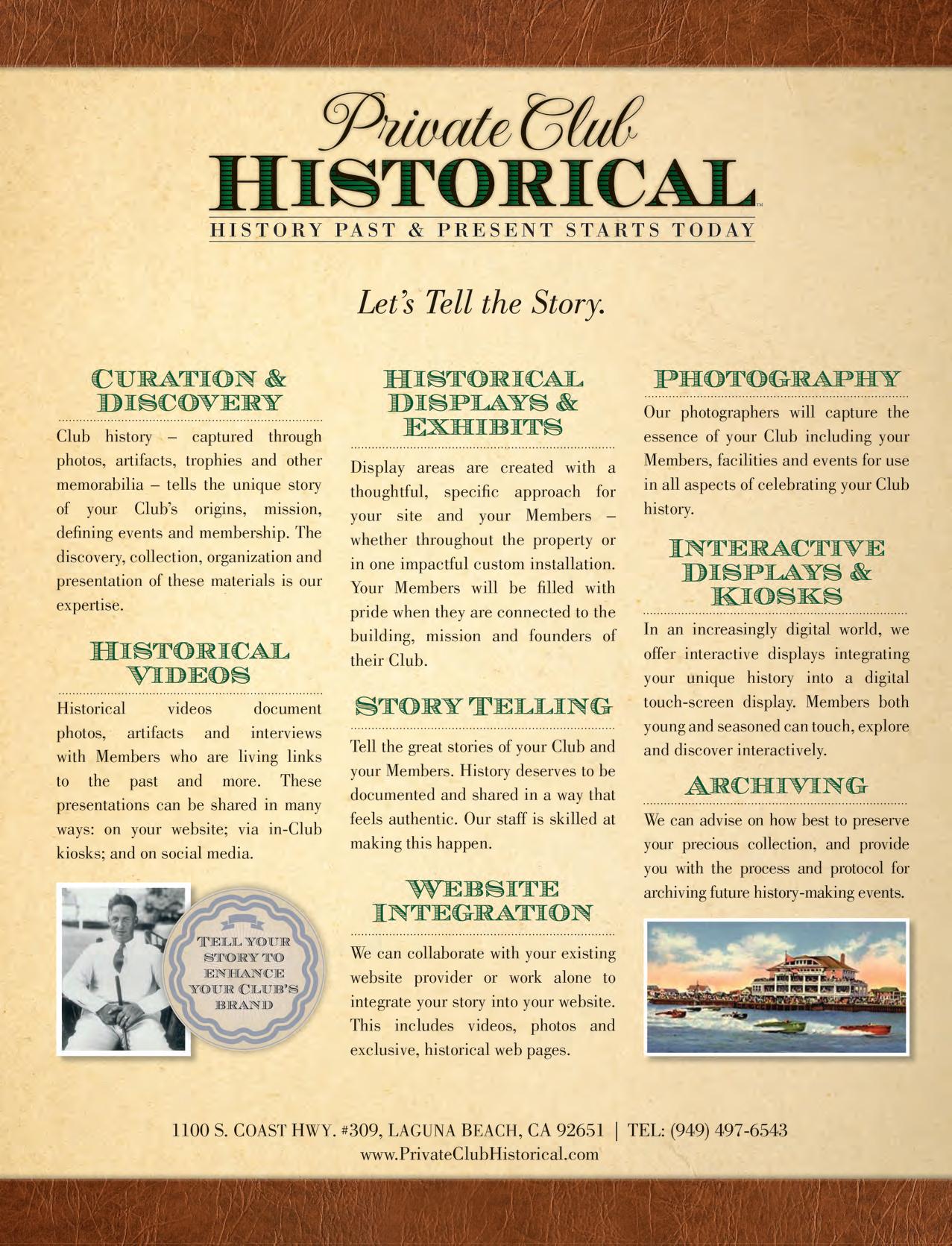
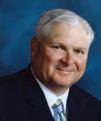













It’s all about creating value…membership value!
And how do private clubs build that value…create a legacy? As we take our annual look at the ‘State of the Industry’ in the final issue for 2015, these are the questions we must ask.
One of our feature contributors, Henry DeLozier, profoundly raises the questions: What will be your legacy at your club? Workmanlike and dependable? A visionary, or what?
In the private club industry, DeLozier maintains that ‘servant leadership’ requires all of these legacies, and more. In his writing, DeLozier offers five ideas that can help when building a legacy for your club –servicing members, creating a club vision, defining the ethos of your club, aligning the ethos and strategic plan and finally, telling stories of your club.
DeLozier expounds with plenty of example, that, “The legacy of your club is squarely in your hands to shape, nurture and teach. “
It’s great food for thought, especially at the time of year when so many clubs are welcoming new boards of directors, preparing for annual retreats and the year ahead.
In our September/October issue, Dave Doherty, writing under the Green Committee, explained the value of four-way management –to those above, below and to each side of the general manager.
This time ‘round, he writes about a golf course superintendent, who while having to contend with extreme heat conditions, was unable to bring the club’s greens around until it was too late. The club’s board, green committee and members pushed for change…the concern was irreversible. The superintendent hit the bricks.
“The situation was handled with ‘four-way management’,” explains Doherty. The general manager did have the superintendent’s back. This he suggests made a really uncomfortable situation and decision as little easier to handle…a resignation with a severance package, rather than being fired. Fact is, Doherty says, few of us are ever able to succeed without someone having out back. If you think about it, that’s probably truer in the private club industry than many other workplaces.
Very often these days, private clubs rely on search firms to help fill vacancies at their clubs…from CEOs, COOs, general managers and on down.
We put several questions to several industry search firms including Kopplin & Kuebler Executive Search, GSI Executive Search and Denehy Club Thinking Partners. Representatives from these firms offer different thoughts and opinions, but it might just be enough to convince your club’s board of directors to invest in a search firm rather than try and fill vacancies on its own.
There’s a lot of merit in what these people saying, including the fact that they’ve got the inside track on candidates who might really be a fit at your club. Have a read…it’s our cover story this issue. Search Firms What Can They Do for Your Club?
■ ■
This issue also features introductions to 2014’s final three top presidents: Tom Tempel, President, The Country Club of Crystal Coast, Pine Knoll Shores, NC; Brenda Tilley, President, Scarboro Golf Club, Toronto, Ontario, Canada; Chuck Wibby, President, Boulder Country Club, Boulder, CO.
Of course this sets the stage of the selection and announcement of BoardRoom’s Top 2015 Private Club Presidents from around the world, in our January/February 2016 issue. We’ll have detailed information about our Distinguished Club President and others selected for their outstanding efforts with their private clubs.
■ ■
Our “Excellence in Achievement” Awards are the only private club industry awards that recognize the clubs’ business partners. And our BoardRoom 2015 “Excellence in Achievement” Award recipients receive their due in this issue, specifically for their 2015 achievements.
BoardRoom magazine’s industry peers review and select these outstanding suppliers and consultants, representing various aspects of course and club operations. Winners each year are selected for overall excellence, achievements, innovation, vision for future growth, and continued impact on private club operations in their respective fields BR
Got a comment?
Drop us a note: dave@boardroommag.com
Publisher/CEO
John G. Fornaro
Editor/Co-Publisher
Dave White
Associate Editor/Creative Director/Co-Publisher
Heather Arias de Cordoba
APCD Executive Director
Bill Thomas
Editorial & Marketing Director
Dee Kaplan
Account Manager
Dina Alleluia-Carr
Contact Information
www.BoardRoomMagazine.com | www.apcd.com (949) 376-8889 or (949) 365-6966
Subscriptions and Website and Comments
Heather Arias de Cordoba
www.BoardRoomMagazine.com (949) 365-6966
Featured Columnists
Henry Delozier
John G. Fornaro
Bonnie J. Knutson
Kurt Kuebler
Nancy M. Levenburg
Jerry McCoy
Contributing Writers
Steven Backman
Barry Banther
Bob Bodman
Chris Boettcher
Bill Boothe
Lisa Carroll
Ronald F. Cichy
Donna Coyne
Dave Doherty
John Embree
Mark Filippo
Susan Greene
Larry Hirsh
Lynne Lafond Deluca
Jimmy Lynn
David McCabe
Eliza Selig
Jim McLaughlin
Macdonald Niven
Michael Phelps
Rosie Slocum
Michelle Tanzer
Bruce R. Williams












BoardRoom magazine is published by APCD Inc.
1100 S. Coast Hwy. #309 Laguna Beach, California 92691
The BoardRoom magazine (USPS 022516, ISSN 15537684) is a bi-monthly trade publication. Issue 261
Periodical postage paid at Laguna Beach, Calif. and additional mailing offices. POSTMASTER: Send address changes to THE BOARDROOM magazine, P.O. Box 9455, Laguna Beach, Calif. 92652.
Reach The BoardRoom magazine at (949) 376-8889 ext. 2 or fax (949) 376-6687, email heather@boardroommag.com or johnf@apcd.com or visit the website at www.BoardRoomMagazine.com.


PUBLISHER’S PERSPECTIVE | 10

DUES INCREASES – WHAT’S TOO MUCH OR TOO LITTLE?
JOHN G. FORNARO
“We’re in the dues business!” That’s often the sentiment expressed about the private club industry. What’s too much and what’s too little? What does it all mean for the future of private clubs? So what are the optimal dues?
MEMBERSHIP MUSINGS| 16

THE STATE OF BRAND WHAT’S IT MEAN FOR YOUR CLUB?
BONNIE J. KNUTSON
I had a wonderful professor in my undergraduate days who used to say that communication is shared meaning. Our language – no matter which one we speak – is supposed to clarify meaning so that we are all on the same page. But it doesn’t always work that way…especially over time.
BOARD ON BOARD | 44

WHITNEY REID
Does everyone on your team really understand the point of training and how best to make your training effective? We train for a variety of reasons, but they are all centered on producing change and to keep our service culture strong.
| 12

DEMONSTRATE A STRONG CASE FOR MEMBER ENGAGEMENT
ELIZA SELIG
In your pocket or purse is most likely a multi-tasking piece of hardware that offers on-the-go access to areas of interest, aka your Smartphone. I write most likely, As of October 2014, 64 percent of American adults owned a Smartphone.
18

IS YOUR LEGACY?
HENRY DELOZIER
Bruce Gary is a legend at Engine 40, Ladder 35, a firehouse situated on the West Side area of Manhattan. His legacy is of the greatest good to the firehouse and the firemen and women who call it home. Bruce went to the World Trade Center on September 11th with 12 comrades and did not return.
WINNING STRATEGIES | 54

JERRY
MCCOY
“If you show him someone who is smiling, cheerful and optimistic, then he will show you someone who has no idea what’s going on,” quipped Cy the Cynic, a newspaper bridge column character, in a recent article I read.
BOARDROOM BASICS & BEYOND| 14

WILL THE BROKEN RECORD EVER BE FIXED?
KURT
KUEBLER
The broken record keeps playing over and over and over! So, what’s the problem? For 15-plus years we’ve been talking about the lack of accountability and general dysfunction in many private club boardrooms around the country.
PLIGHTS AND
| 36

THE “PASSING FLASH” THANK-YOU NANCY M. LEVENBURG
Cruising along an expressway the other evening, it occurred to me that truckers in bygone years used their headlights to signal lane change clearance. On the other hand, the country club/golf resort has long been home to a whole host of common courtesies and social pleasantries.

GREGG PATTERSON
On the final leg of the Great Managerial Journey. I look back on my education and remember dozens of classes I took on leadership, all the books I read on leadership, and all the seminars I gave on leadership. And I’m saddened to say that I took no courses in followership, delivered no lectures on followership and offered no advice on followership to interns, team members or peers.

Dave Doherty
Bruce R. Williams






Steven Backman
Qualities of a Lasting Leader By Barry Banther
TECHNICAL PERSPECTIVES.
Wireless Pop Quiz: What Do You Know? By Bill Boothe
HOUSE COMMITTEE.
Recommendations for Your New Managers By Lisa Carroll and Mark Filippo
DISTINGUISHED
St. Andrews Country Club Saves With Better Billy Bunkers
DISTINGUISHED IDEAS.
Larry Hirsh
By Bob Bodman
It’s
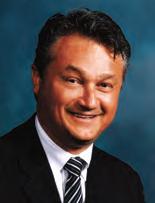
JOHN G. FORNARO
“We’re in the dues business!” that’s often the sentiment expressed about the private club industry.
What’s too much and what’s too little? What does it all mean for the future of private clubs? So what are the optimal dues?
The fact is dues for most clubs continue to rise. A number of factors are causing increases, including federal and state requirements, healthcare costs, pensions, insurance and utilities with increasingly high water costs.
At the same time members’ expectations for a greater member experience are rising…so, where’s the saw-off?

The ‘common denominator’ of almost every struggling private club is a dues structure that greatly exceeds the ‘value proposition’ of member experience and usage patterns. When private club life was the aspect of the consumer’s social life they didn’t have to be as cautious or careful as to what a person was paying for the privilege of club membership. But, those days are gone.
Steve Graves, Creative Golf Marketing
How much will members take before they say that’s enough, and leave the club? What’s the breaking point? What must boards of directors consider when settling on dues levels, increases etc.?
Certainly a club can do what it wants, but often it’s not so much a question of ‘can’ but
what a club ‘should’ do. What keeps your members happy?
Based on inflation, water, health care, and electricity costs, course and clubhouse improvements, 10 years from now this likely means a 30 to 40 percent increase in a club’s expenses. Does that mean dues will need to go up 30 to 40 percent in 10 years? Will enough people want to pay those dues? And are we also pricing ourselves out of the market for younger members? What do you foresee? How do clubs prepare for the future?
These are all very important questions as the private club industry works on ways to bring in members, retain members and increase revenue. How much sensitivity is there about raising dues too much, too quickly? What are the deciding factors?
“There’s no perfect formula,” explained Bob Bodman, principal in Club Resources, a private club consulting firm based in Truckee, CA.
“It is a balancing act between how sensitive the members are to price increases, what value they are receiving, what the market is charging, what the club needs to accomplish with the dues (mission and purpose), what will attract or deflect new member growth and the overall attitude and pride the members have in the club.
“At the very least, most clubs should have a set schedule for what the dues will be for the next five years as a guideline, based on a set of strategy plan priorities. Variances from that schedule should be for extraordinary items. Most of the members’ sensitivity to dues has to do with inconsistency in the approach to dues and dues increases. Dues should be predictable so members can adjust and prepare for each year,” Bodman outlined.
“Dues increases become a necessary part of a club’s health, but the amount is the club’s single most critical annual decision. Part of the process


In your pocket or purse is most likely a multi-tasking piece of hardware that offers on-the-go access to areas of interest, aka your smartphone.
I write most likely, because as of October 2014, 64 percent of American adults owned a Smartphone, according to Pew Internet Project’s research related to mobile technology.
So with the growth in mobile, how is it employed in relation to the club environment?
HFTP partnered with Agnes DeFranco CHAE, Ed.D., professor, and Cristian Morosan, Ph.D., assistant professor, at the CN Hilton College at the University of Houston and looked at mobile use in the club industry.
The results provide convincing data that clubs need to take a serious look at providing at the very least a responsive website that can adapt to fit on multiple screen sizes.
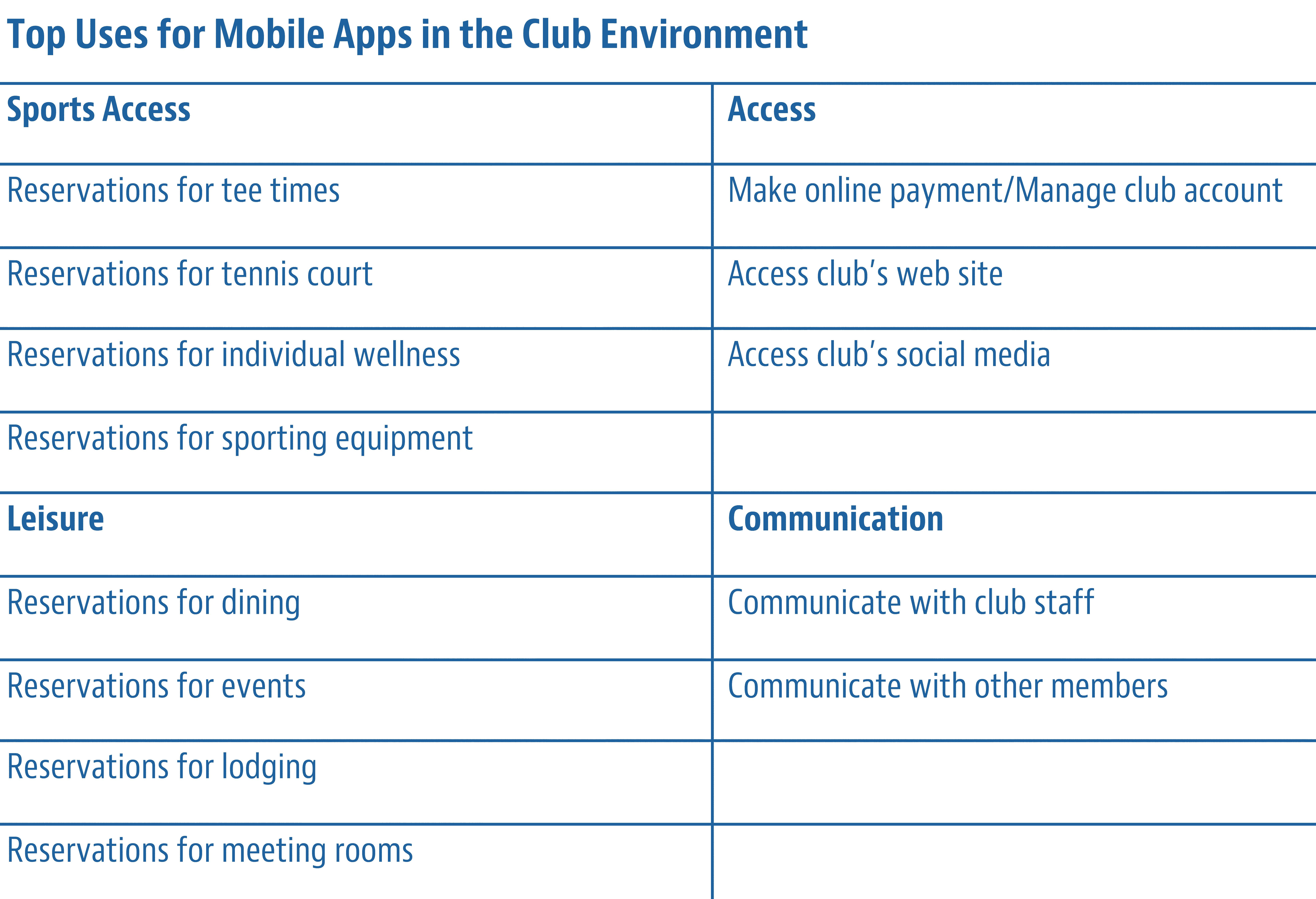
The study report, based on the responses of 737 individuals within the United States via Qualtrics, included these demographics: Over 50 percent were between the ages of 31–50, had a household income between $100,000-$200,000 and were members of clubs with between 301650 members.
Club websites are still the primary online portal that the respondents use to access the club via a mobile device (86 percent). Further analysis
reveals that regardless of the age group, mobile devices are used to interact with the club.
The greatest use of mobile is not surprisingly by the 31–40 age group for everything from sports/dining reservations to communicating with club staff. But even amongst the 61–70 age group, there’s some mobile activity, primarily to access the club’s site.
So what functions do members use when they get online to engage with the club? The top is to gain access, including managing the member’s account. The other top uses include: sports (i.e. tee time reservations), leisure (i.e. dining and event reservations) and communication (i.e. contacting club staff).
Now that we know members are connecting to clubs through their phones, how should clubs engage their membership via mobile media? The study’s authors recommend several methods to help clubs be successful.
First and foremost, make sure that your site works, because there is nothing more frustrating than going through a reservation process with no end result. Hold back a big rollout until you have tested all its functions. Next, don’t waste resources on a site that no one knows about. Be sure to promote and encourage use. Also, make it a simple process to complete a task. Condense reservations to as few steps as possible.
Once you have the members engaged, use the opportunity to push offers. By tracking a member’s habits (such as a weekly tennis game), take the opportunity to suggest a court reservation if one hasn’t been made. Or how about a postgame massage?
And finally, now that you have a captive audience, be sure to assess usage and satisfaction and adjust accordingly, because why have the mobile tool if your members aren’t enthusiastic about it. Br
Visit the industry reports and research page at www.hftp.org for the full survey report.
Eliza Selig is the HFTP director of communications.

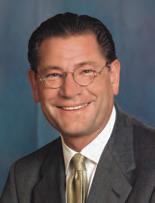
the broken record keeps playing over and over and over! so, what’s the problem?
For 15-plus years we’ve been talking about the lack of accountability and general dysfunction in many private club boardrooms around the country.
We’ve done nearly a thousand board retreats during that time, with solid support and awareness coming from those sitting through retreats. Yet increasingly, we continue to receive calls confirming that the message still hasn’t hit home in a large number of boardrooms.
The typical board model of nine members –with three of them churning over each year –requires tremendous focus by either the remaining board members and/or the GM/COO to ensure that the new board members ‘get it’ early on in their tenures or, better yet, even before they get on the board!
Unfortunately, too many clubs, even if their bylaws allow for it, don’t get a second term out of their board members these days, for a variety of reasons ranging from too many other personal and professional time demands to it simply being an ever more thankless job of giving back to one’s club. That clearly makes the necessity of ensuring continuity and alignment toward sustainable business practices even more important.
So, how do we stop the broken record from playing over again and again and again?
Clearly, we’ve written numerous times about best practices of the 200-plus clubs we visit each year. Many of those practices have “stuck” and are being practiced regularly at several high performance clubs around the country.
While not purporting to have “the solution” for every club and situation, successful results at many of these clubs suggest that there is a number of basic, common sense practices that, if adopted, would certainly help the most dysfunctional of operations.
What do most of those high performance clubs do in the boardroom that makes them so?
•They have open and honest discussion and relationships, both among the board members
AND with their GM, GM/COO or CEO, whichever title the top executive holds in the organization. They are respectful of others’ opinions and try understanding and successfully navigating the ever-changings and sometimes choppy waters that are inherent in clubs where members are investors and users.
• They are engaged and do the work they have agreed to take on. They aren’t there to simply advocate for a personal area of interest, or show up to make a few comments and then wonder why things happen the way they do at the club. They are passionate about the club, but keep things in perspective. Clubs are made up of a wide array of people and interests and while there is certainly commonality in membership, it is becoming more and more diverse and disjointed. This requires increasing sensitivity to readily offered opinions and a growing need to be more transparent with goals, expectations and outcomes than ever before.
• They are purposeful in their efforts. They have thought behind whom they ask to participate in both volunteer governance and paid leadership roles. They clearly define and memorialize the expectations they have of people in those positions, and they are obsessive about protecting the long-term stability of the club.
We often liken the vast majority of dysfunctional clubs with a football team that changes its coach each year (like a president transitioning in a club) wherein the president tears up the last coach’s playbook while instituting a whole new coaching philosophy!
No team is ever successful tearing up nearly the entire playbook each year. They need to remove plays that don’t work, add new and different ones, and try new offensive and defensive schemes!
Clubs with enlightened leadership truly seem to understand that in order for their clubs to be relevant and sustainable do so by thoughtfully, strategically and intentionally creating business
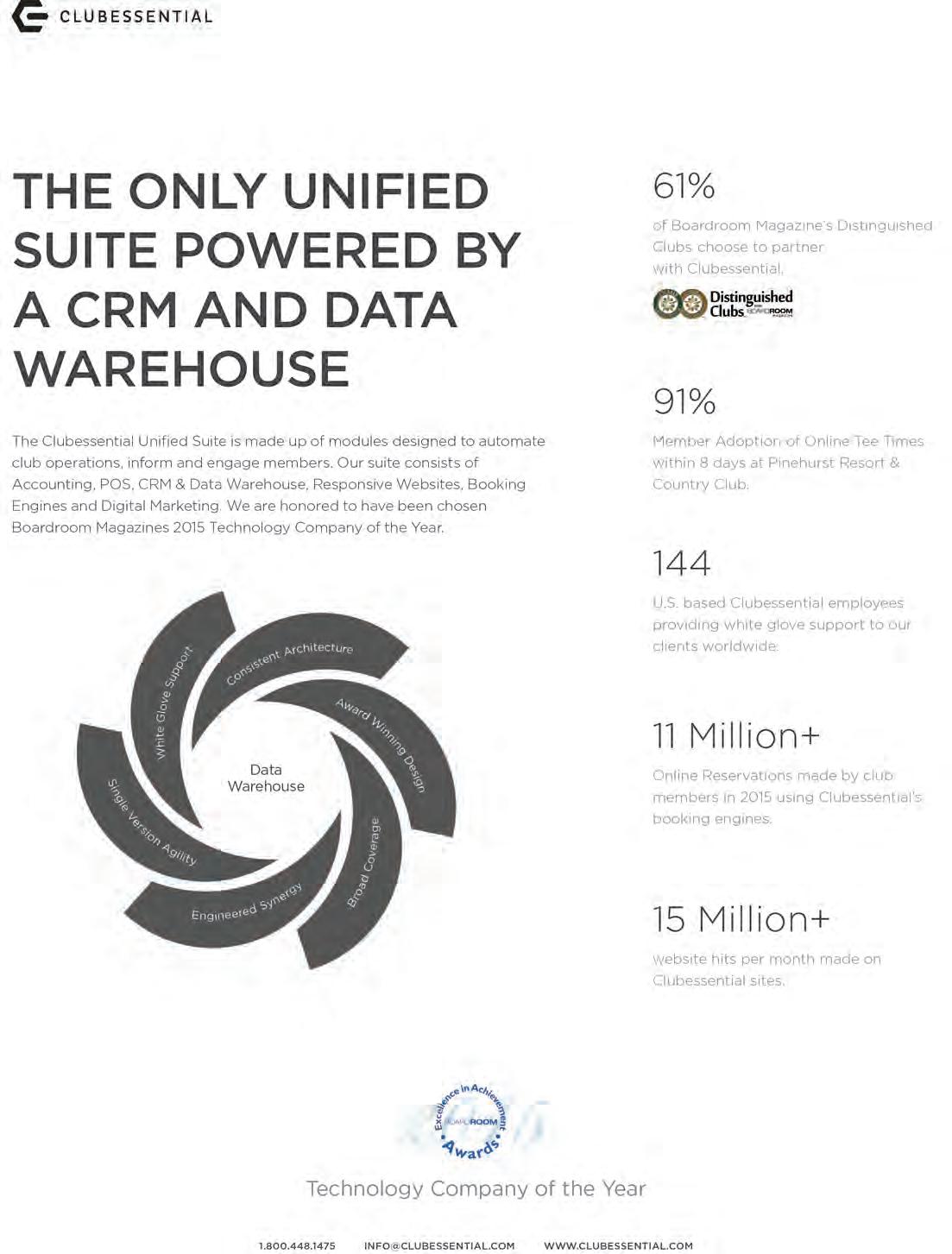

I had a wonderful professor in my undergraduate days who used to say that communication is shared meaning.
Our language – no matter which one we speak – is supposed to clarify meaning so that we are all on the same page. But it doesn’t always work that way…especially over time.
Meanings change and different people begin to use the same word to mean completely different things. Take, for example, the word gay, which has morphed from the old English Christmas carol ringing out, “don we now our gay apparel…fa la la, fa la la, la la la” to being “attracted to someone of the same gender.”
Ask any teenager and they will tell you that “bad is good.” And being “cool,” well, that certainly doesn’t mean that you need a jacket anymore.
Brand is also a word that has changed over time. So the question becomes, what does brand mean today and what does that mean for your club. If that is puzzling, think of this: I Googled “definition of brand” the other day and got 144 million hits.
If we are to understand the relationship between clubs and today’s branding, we need to remember the admonishment of my old college professor and make sure we are all on the same page when it comes to defining the term.
The notion of brands and branding began in ancient times. Fast-forward to the latter part of the 20th century when marketers began to understand that a brand had come to mean more than just a mark or which products were theirs.
They began to appreciate the fact that a brand was really an image and that marketers could “position” a crafted perception of that image in the consumer’s mind. The perception of the club’s image, then, is the reality of the club’s brand to its members, prospective members, and community.
In other words, your club’s brand exists only in the minds of your members.
To really grasp the State of Brand today, we have to first understand what a brand is not. A brand isn’t a logo, a name, marketing, advertising, or strategy.
Rather, a brand is “the sum of all perceptions about a product, service, or company, built through experiences and communications…creating a set of expectations between that brand and its customers/consumers.”i
Said another way, a brand is simply how people feel about it. How do your members feel about your club? That’s usually a tough question for you or for them to answer because, for most people, it is hard to put feelings into words. tools to use
When working with clubs to enhance their branding efforts, there are two tools I always use to help me gauge members’ feelings, i.e. that emotional bond between member and club brand.
The first tool is simply a two-part question: “If you could describe this club by an animal (or car or cereal), what will that animal be?” This is followed by “Why?”
You are not really interested in the actual animal itself, although some of their choices can give you more pause or more chuckles than others, but rather you are interested in the “why.” Because it is the “why” that yields insights into the members’ feelings about the club brand.
The second tool involves listening to how members refer to their club. Do they say I’m going to “my” club or I’m going to “the” club? There is a big difference. And their choice of adjective gives insights into the strength of their brand attachment because the “my” becomes a surrogate nickname for your club.
Interestingly, marketers see that, when customers start referring to a brand by something different from its actual brand name, it is an indicator that the brand relationship is growing stronger. Think about people you know who have been given nicknames by friends and family.

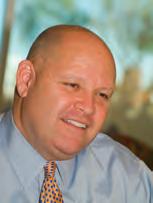
Bruce gary is a legend at engine 40, ladder 35, a firehouse situated on the West side area of Manhattan. His legacy is of the greatest good to the firehouse and the firemen and women who call it home.
Bruce went to the World Trade Center on September 11th with 12 comrades and did not return to 40/35 – as the firemen call it. Only one 40/35 fireman survived that fateful day. Their legacy of devotion to duty and one another, though, is timeless.
What will your legacy be at your club? Workmanlike and dependable efforts? Visionary plans and intentions? People who will never forget you?
The job of servant leadership requires all of these legacies…and more. Dedicated and conscientious club leaders leave their footprints in the club history. Club leaders do well to think about and plan the footprints they will leave at the club.

It is the big goals that rise above the dust of the day. If you are a leader of your club –serving on the board or as the club manager –create a vision that is expansive in its reach and timeless in its values...Clubs that sustain their vision heed core values and are not whipsawed by small – and often vocal –segments of the membership.
Here are five ideas to remember when building a legacy for your club:
1. Serve your members. Place the needs –and, when appropriate, the wants – of your members at the top of your list. True service includes saying “no” sometimes and finding better or alternate solutions.
Provide professional guidance and knowledge borne of experienced observation and measurement. Help the board and the members to understand the factors that influence long-range planning and the lifestyle value for the club.
Listen to the better angels of your nature. Serving others is demanding work sometimes. Nerves become frayed. Feelings are sometimes hurt. Things don’t go as planned. Members are sometimes unappreciative and critical. Shortly before the beginning of the Civil War, Abraham Lincoln, trying to hold together the fragile Union, implored the Congress to, “listen to the better angels of your nature” and work to find shared solutions.
The role of servant leader is one of tremendous duty and privilege. It takes special people to serve others.
2. Create a vision of the club. The vision for most clubs is short-term and regulated by the pressures – financial, social, and political – of the day. Clubs with vision have certain characteristics in common:
• They think big. It is the big goals that rise above the dust of the day. If you are a leader of your club – serving on the board or as the club manager – create a vision that is expansive in its reach and timeless in its values.
•They serve the core of the membership. Many clubs have recruited new members whose values and expectations are loosely aligned with those of the club. Clubs that sustain their vision heed core values and are not whipsawed by small – and often vocal – segments of the membership.
• They are financially sound. The clubs with vision are astute financially. They use debt when it is favorable and they ask for financial support from their members when it is advisable. They are truthful about rising costs and they treat employees respectfully and responsibly.
• Great servant leadership plans for longterm success. The best plans are three and five-year plans.
• They see that everyone – members, guests and staff –fully understand the vision of the club. Top clubs are open and reliable in their governance and communications practices.
3. Define the ethos of your club. Most clubs – and gatherings of people – have similar values that define them. What are the core values of your club? Following are some that appear in many strategic plans:
• We will act with integrity and truthfulness in all of our dealings.
• The club will be a safe haven to benefit its members and their guests.
• We will care for one another at all times.
• The club will remain fiscally sound and socially engaging.
•We will treasure, nurture and teach the children of our club.
The Cherokee people teach their children of the conflict between good and evil thusly:
“A fight is going on inside me,” he said to the boy. “It is a terrible fight and it is between two wolves. One is evil - he is anger, envy, sorrow, regret, greed, arrogance, self-pity, guilt, resentment, inferiority, lies, false pride, superiority, self-doubt, and ego.
The other is good - he is joy, peace, love, hope, serenity, humility, kindness, benevolence, empathy, generosity, truth, compassion, and faith. This same fight is going on inside you - and inside every other person, too.”
The grandson thought about it for a minute and then asked, “Which wolf will win?” To which the old chief simply replied, “The one you feed.”
If one is to build a lasting legacy with purpose, it must express the values of the club and its members. And, if the club is to honor its values, it must ensure that its strategic goals are aligned with the ethical values of the club.
4. Align the ethos and strategic plan. A growing number of top-performing clubs have implemented careful and deliberate strategic plans that assemble a thorough understanding of the club’s market, membership and financial plans into an actionable method of leadership and management. The best plans align the core values of the club – its vision and mission – within the strategic plan. Stated simply, there are what they intend to be.
President John F. Kennedy was visiting NASA headquarters for the first time, in 1961. While touring the facility, he introduced himself to a janitor who was mopping the floor and asked him what he did at NASA. The janitor replied, “I’m helping put a man on the moon!”
The management team at NASA has so effectively communicated the mission and purpose of the enterprise that everyone on the organizational chart saw herself or himself as a vital part of successfully achieving the mission. That’s alignment!
5. Tell the stories of your club. Story telling is the prehistoric method of sharing accomplishments, values and guiding principles. Among Native Americans it was said that the greatness of a people were the stories of its enemies. The stories we tell define us. They demonstrate the cultural bias on which we operate.
Most clubs – and gatherings of people – have similar values that define them. If one is to build a lasting legacy with purpose, it must express the values of the club and its members. And, if the club is to honor its values, it must ensure that its strategic goals are aligned with the ethical values of the club.

The firemen tell stories of Bruce Gary’s dedication to the firehouse and his brother firefighters. One of the many stories recalls the new fireman assigned to the nozzle at his first fire. The nozzle is the tip of the spear where a fireman wrestling a 60-pound nozzle under tremendous water pressure walks straight into the inferno. On this fire, the young fireman understandably hesitated in the face of the blaze and felt the strong arm of Bruce Gary lifting him and the nozzle shuffling them inexorably forward into the fire. It was the old pro teaching the newcomer because the ethos of the firehouse is to teach and care for one another.
When the fire was out, the nervous rookie turned to Gary to see the veteran’s hand extended with the summary, “You did okay kid. Welcome to the New York City Fire Department.”
The legacy of your club is squarely in your hands to shape, nurture and teach. Every club is defined by its legacy and shows the way for those who follow. Br
Henry DeLozier, a recipient of the BoardRoom magazine Lifetime Achievement award for 2014, is a principal of Global Golf Advisors. You can contact him at hdelozier@globalgolfadvisors.com.








“the best managers need to be recruited. they will not apply.” and the fact is, private club search committees “cannot manage (a search) confidently. only a top search firm can. good candidates know this, desperate candidates don’t care.”
So says Dan Denehy of Denehy – Club Thinking Partners, who stresses that the ‘biggest mistake’ a private club can make when casting around for private club executives is to try and have the search committee do the job.
No question, finding top-level talent for the private club industry can be difficult but search firms are always on the hunt for up-and-comers while generating a talent pool of potential private club management candidates.
Denehy, and others in the executive search business, are of the opinion that they can do what private clubs cannot do very effectively…and that’s find the cream of the crop…the top management people private clubs want today to run their business, while, of course, meeting members’ expectation.
It’s no small task but especially true as boards of directors and general managers more and more seek a route to collaborative governance, whereby the club’s board established the club’s policies with the general manager firmed in charge of dayto-day operation.
A search firm’s role is to act as the agent for the client club, for a fee of course, and the search
consultant in charge of the process also must be sensitive to the needs and wants of the candidate as well.
It’s a delicate process throughout because peoples’ careers and critical life decisions hang in the balance, coupled with the fact these decisions must also be made in a club’s best interests.
To understand better how and what search firms do, Boardroom asked private club search firm representatives for their thoughts and answers to several questions.
Here are their replies. It’s food for thought for private club boards of directors.
1) you hear first hand from a large number of boards and search committee members what they are looking for in their top executive leaders, what do you hear most often? How has that changed, if at all, over the past several years?
Dan Farrell – gsI executive search
Our answers are a compilation of GSI team experiences that brings a varied perspective to the search process. Our data, which is confirmed by a nationwide client base of clubs of all demographics, clearly indicates that boards and search committees require their top executives to have strong core values based upon leadership, stability, integrity and professionalism.
Boards today expect us to deliver the best candidates who exceed the established and agreed criteria. Club leadership expresses the importance of hiring executives who show positive career movement and advancement; stability is not considered a jump in positions every two years. The leadership qualities that boards require include the ability for a manager to provide a strategic dialogue, which moves the club agenda forward. In addition, integrity and professionalism must set the standard for all club employees and be consistent with the club culture.
Kurt Kuebler – Kopplin & Kuebler executive search
Most often, we’re hearing from both search committee members and senior staff that they are looking for sincerely engaged leaders who sincerely care about the club, the team, the members, etc., and aren’t in it simply for themselves. They want accountability, a clear ability to set direction, and have stronger overall managerial and leadership capabilities as most boards find themselves far less interested in having to ‘run the club’ as they look for true professionals and “thought partners” to do so.
Dan Denehy – Denehy, club thinking partners
• Club has lost confidence in their GM/leader.
• Manager is weak in finance.
• Manager can’t set legitimate goals and objectives for themselves and their senior team.
• Always a nice “guy”, friendly, gets hospitality but is lacking, to a varying degree, business acumen.
• Board doing too much work.
• Manager doesn’t manage up.
• Manager is way overpaid for what the club is getting.
2) What do you see as the biggest mistake a board or search committee makes in the search process if they undertake the effort on their own?
scott Mcnett – gsI executive search
Search committees make a great misconception by underestimating the time it takes to manage the search process properly. The following requirements that are often overlooked and necessary for a successful search include:
• A clear understanding of the club vision and setting priorities for the new general manager
• Developing a position description that communicates the expectations of success for the new manager
• Managing the process with the club leadership and search committee to limit personal agendas
• Execution of administrative details such as interview coordination, seamless and transparent member communication, background and reference checks
• Competitive compensation market analysis and effective negotiation of the job offer.

Each of these components is critical to the success of any club search. The effective search chair will delegate proper duties to each committee member, while keeping the committee focused on the task.
Kurt Kuebler – Kopplin & Kuebler executive search
The biggest mistake? Not having a clearly defined set of criteria upon which to evaluate candidates, and not having a regimented process to follow so as to be able to have a solid ‘apples to apples’ comparison of candidates at the end of the process.
Additionally, well-intended search committee or board members will often think that they can have an ‘off the record’ conversation with someone they know at the club where a candidate is currently. These well-intended efforts have put a large number of candidates ‘at risk’ at their present clubs when word quickly gets around that “they are looking!”
Well-intended members simply should not make those kinds of inquiries without permission and/or guidance from the person they are asking about. Too often, those candidates aren’t even in the running, but they’ve now
While not all search firms focus on the same issues, or emphasize the same attributes in candidates, just as there are differences in private clubs, search firms do give private club search committees and board of directors plenty of food for thought as clubs strive to meet their members’ expectations and sustainability in the future.
been put into a very compromising and potentially lifechanging situation!
Dan Denehy – Denehy, club thinking partners
• Not understanding they (the search committee) have no real access to talent unless they are an incredibly top tier club. The best managers need to be recruited, they will not apply.
• Committees cannot manage confidently, only a top search firm can. Good candidates know this, desperate candidates don’t care. Committee members are always quick to call their buddies at target clubs, which is a poor idea at any level.
• Committees have no idea what the best answers are to their questions. The committee members are generally not in the private club business or hospitality. Candidates know this, so their “creative juices” are flowing during the question and answer period.
• Committees underestimate the real work of managing the process. If they understood it, they would clearly see the value in outsourcing the assignment.
3) What do you see as the most important factor for a search committee to stay focused on during the search effort?
richard Farrell, president – gsI executive search
richard Kopplin and Kurt Kuebler – Kopplin & Kuebler executive search
Process, process, process…so as not to get enamored with characteristics, answers, etc., that are not primary or even relevant to the role.
The search process for a private country club general manager position typically takes over 160 hours of work to find the appropriate candidate and insure that they agree to the offer presented by the club.
The role of the search firm is to act as the agent for the client club, since they are paying the fee, but the search consultant in charge of the process has to also be sensitive to the needs and wants of the candidate. The process should be handled professionally from start to finish with the understanding that we are talking about manager’s careers and critical life decisions.
A search firm is able to discreetly talk to managers who may be actively employed and can do so with a degree of certainty that their confidence (the candidate’s) will be maintained throughout the process. In more than one instance we have been asked to assume a process initially started by a club search committee because either the caliber of candidates was not to their liking or they had difficulty in “closing the process” with their top candidate.
Dan Denehy – Denehy, club thinking partners
• Discipline to the process. If the search committee doesn’t know the best practices in executive search, the committee members don’t know what they are missing.

The most important factor a search committee should consider is the importance to remain objective during the process. Staying objective will force the committee to focus on the evaluation of candidate credentials, skill set, and the identification of leadership traits that fits the club culture. Subjectivity produces personal agendas and decisions made upon a popularity contest. Search firms bring the aspect of a third party participation, which validates and compares viable candidates against agreed criteria.
• They need a time line with deliverables and rigor to the process.
• They need to be extremely transparent and forthright with the consulting firm they are working with. Good firms will diagnose a club’s need deeper and with more detail than the committee can.
from Cover Story | 21 see cover story | 90












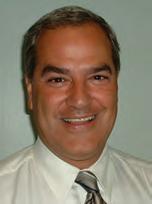




These top executives have taken their clubs to a higher level by implementing a better approach for managing club food and beverage departments. Building on a foundation of best practices, checks and balances, and integrated business flows, they incorporated leading-edge food and beverage automation and reduced labor by tying all their systems together.
The controls, disciplines and reports produced by this approach make it possible to run food and beverage departments at peak efficiency, substantially reducing clerical labor and food costs. Innovation. A better way to do business Just what you would expect from leaders at this level.





the recent ruling by the u.s. supreme court in obergefell v. Hodges is crystal clear; same-sex marriage is declared legal all 50 states.
Essentially, the court’s ruling means that state laws banning same-sex marriage are unconstitutional. Constitutional or statutory provisions prohibiting same-sex marriage, such as the Defense of Marriage Act’s (“DOMA”) adopted in approximately 15 states, are no longer enforceable, and court clerks must issue marriage licenses or face legal action and possible jail time.
Regardless of the steadfast views held by individuals on either side of the issue, the long-term impact the court’s decision will have on the club industry remains somewhat unclear and is blurred by the nature of each particular club’s private status.
It is widely known that “truly private” clubs are afforded certain exemptions from state and federal discrimination laws in connection with membership admissions and benefits policies. This is true without regard to whether the policy relates to race, religion, sex or other protected class and would likely extend to same sex marriage as well as significant other policies, whether same-sex or not.
However, the definition of truly private is often misunderstood or inadvertently misstated. This is largely because courts determine whether a club is “truly private” by analyzing multiple factors rather than using a bright line test.
Factors included are: Whether the club engages in any advertising activities, receives revenue from any non-member, permits any public use of its facilities and the degree of selectiveness for the admission of new members.
Additionally, while a club’s tax-exempt status plays an important role in the analysis, tax status alone certainly cannot be relied upon as ultimate proof of private status for discrimination purposes. If the issues concerning same sex marriage are of paramount importance to a particular club, thorough review of all of these factors is well advised.
In any event, each individual club may be forced to wrestle with factors other than the law when considering same sex marriage issues. The fact that a truly private club may be legally protected from attack under discrimination laws for denying admission on the basis of sexual orientation may not relieve it from moral considerations and business implications relating to these types of decisions.
The evolution of significant other policies in the club industry illustrates how these factors influence club boards and effectuates change to long-standing practices. In the relatively recent past, many clubs refused to extend membership privileges to persons other than legal spouses. However, the clear majority of clubs, whether truly private or not, have now modified their governance documents to recognize significant others for membership privileges in some meaningful way. Some of these have decided to treat significant others as the virtual equivalent of a legal spouse while others have granted use privileges on a more restrictive basis, but the trend is certainly toward recognition of significant others in many material respects.
Whatever the specifics may be for each club, cultural change exerts a force upon club policymakers in a way that is much less quantifiable, but possibly much more powerful than the operation of law.
In our industry, change is often resisted and slow to occur, but it does occur. When it does, all of the factors including legal, moral and business concerns, will need to be evaluated in light of the particular facts and circumstances of the club involved. Br
Michelle Tanzer, Esq. serves on the National Club Association board of directors and is legal counsel to the Club Spa & Fitness Association. Ms. Tanzer is chair of the Residential, Resort and Club section at GrayRobinson, P.A. and can be reached at (561) 8665700 or via email: Michelle.Tanzer@Gray-Robinson.com.



this year, I’ve attended several cMaa conferences and events to meet many of you and get a pulse on what’s happening in the club industry. While there are many challenges that both the club and tennis industries face heading into the new year, addressing those concerns and implementing a course of action will allow us to move in a positive direction in 2016.
So here’s a look at some of the tennis industry trends and what those trends mean for your club, and how managers can benefit from increasing tennis activity at their clubs and facilities.
Tennis play is flat, with a slight 1.1 percent decline in 2014 in the participation of core players – those playing 10 or more times per year. Even more startling is the fact that 3.71 million players left the game between 2013 and 2014 –a 20.7 percent churn rate.
However, the good news is that the movement to increase youth tennis players is working. Youth tennis participation increased in 2014, with a four percent gain in 6-12 year olds and a nine percent gain in 13-17 years old.
This youth play increase in has spurred the need for 10 and Under Tennis equipment.
Wholesale red, orange and green ball unit shipments increased 4.2 percent in 2014. In the past 12 months, 74 percent of court contractors reported involvement with constructing 10 and Under courts, an increase of 25 percent from 2013. New players 10U had the highest increase in private/commercial facilities for the first time.
However, youth tennis courts are still a small fraction of the total courts built with only 2.8 percent of total courts built. Allowing children to play on different size courts makes it easier for them to play, learn faster and enjoy the game, so the need for these smaller courts is vital to the growth of youth participation.
Recognizing this, the USTA Facility Assistance program has granted more than $11 million to court infrastructure since 2005, with more than
17,000 courts having blended lines or permanent short courts.
For facilities looking for a less permanent solution for smaller courts can now use removable, portable courts. Connor Sport Court has options for a micro court and a 36-foot court that can be placed anywhere – in a parking lot, on the beach, or on grass, truly anywhere!
Think of putting these courts in a dead space in your facility, or use them for promotional purposes in your community to offer free tennis clinics for kids to get them interested in taking lessons.
The USTA Junior Team Tennis program serves this demographic by making it easier to form teams and compete with players on their skill level. In 2014, there were 850 junior team tennis programs serving 88,000 players nationwide on 11,000 teams. This team-based play is an integral part of the player development process and similar to the experiences they will have in high school and college tennis. This program will help grow your business by running practices during the Junior Team Tennis season and will attract more attention to your programs.
In addition, more kids playing tennis allows for families to get more involved in the club experience together.
As managers who strive to enhance the club experience for their members, consider adding tennis programming that allows families to play together. Recognizing the need to attract new players and engage families, an industry-wide collaborate effort will be rolled out next spring called “Rally the Family.” Look for more information on this new initiative in March 2016. Br
John Embree is CEO at the United States Professional Tennis Association and can be reached via email: john.embree@uspta.org or (713) 978-7782, ext. 117.


LYNNE LAFOND DELUCA
So what does the catering department mean to the private club?
With its mission of “Educating the Club Industry. . .One Catering Director at a Time”, the Association of Club Catering Professionals commissioned an industry-first benchmarking study among club catering professionals to establish club and catering department profiles, marketing and sales practices, menu and pricing strategies and financial performance. The study serves as a launching pad for enhancing professional development, enhancing the profitability of the industry, attracting sponsor partners and growing the size, scope and creditability of the industry.
It was designed and administered during the second quarter of 2015, with the objective of collecting business practices within the club catering industry to set benchmarks for future trending and develop metrics for sharing within the community. ClubIntel managed and administered the study with assistance from ACCP, and here are some of the highlights.
Catering revenues and profit are important to clubs
• On average, catering revenues contribute 14 percent of revenues and in some cases upwards of 21 percent to overall club revenues.
• Catering departments on average generate a profit margin of 23 percent and some as high as 30 percent, making them one of the most profitable departments in a club.
Catering departments need to do a better job planning
• Fewer than 50 percent of catering departments have a sales/marketing plan in place. Greater success is shown in departments that put in place business and marketing plans.
•Promoting the club’s services on external sites is used by fewer than 20 percent of catering directors yet when used it is by far the most effective. Efforts appear to go toward less effective strategies.
• Social media remains an untapped resource for catering professionals.
Discounts and waived room fees important to bookings
• 84 percent of clubs charge room fees, yet 41 percent of clubs waive their room fees, which cost them up to $352 in lost revenue per event.
• Clubs are far more likely to waive or discount room fees than offer a discount on food or beverage services.
Renovations drive revenues
• Among the 50 percent of clubs that have introduced renovations and improvements over the past two years, 73 percent experienced revenue growth afterwards.
• Over the next two years clubs indicate they plan to spend an average $1 million improving their catering facilities.
Service charges are more for the club than employees
• Over 50 percent of clubs apply service charges to the bottom line rather than distribute them to employees. In the case of the large clubs, approximately two-thirds apply service charges to the bottom line.
Event focus might need to be reconsidered to grow revenues
• Corporate events represent 37 percent of event bookings while weddings represent only five percent of bookings, yet weddings generate on average over $20,000 per event.
• An opportunity exists within the industry to grow revenues by enhancing wedding sales.
Certification for club catering professionals is rare
• Over 90 percent of club catering professionals don’t have an industry specific certification.
• Experience and tenure, along with a college degree in hospitality appear to be the leading criteria for success in the industry.
It’s clear the impact the catering department can have on member growth and retention, member experience and overall club revenues is significant.
As well, catering and food and beverage is the one area of the industry that all private clubs have in common, so time is well spent sharing ideas and gaining education in this area. The study will be available on the ACCP website. This is a great opportunity to educate your club on the importance of the catering department and the significance of the member private event revenue potential. BR
Lynne LaFond DeLuca is the executive director of the Association of Club Catering Professionals and a private club industry consultant. You can reach Lynne at Lynne@ TheACCP.com, or visit the website www.TheACCP.com.
Here is what our clients and candidates are saying about our golf course superintendent search process.
“Armen, thank you so much for your dedication in leading our search for a director of agronomy for the Atlanta Athletic Club.The process was efficient, yielded great results and finished ahead of schedule. I was impressed with the quantity and quality of candidates you brought to us. Your knowledge of the industry and key contacts were invaluable in narrowing the field and in selecting Lukus, who is a perfect fit for our club. We could not be happier.”
Kevin Carroll, CCM, GM/COO
Atlanta Athletic Club, Johns Creek, GA
“The smoothest process I have ever been a part of was going through a search with Kopplin & Kuebler. Having the opportunity to work directly with Armen was key. Finding a club whose goals and culture align with yours is critical for a long-term, successful partnership. Armen is someone who understands superintendent issues and gave me real confidence during the entire search process. Now I have my dream opportunity here at the Atlanta Athletic Club.”
Lukus Harvey, Director of Agronomy
Atlanta Athletic Club, Johns Creek, GA


“We specialize in GM/COO, Golf Course Superintendent, Executive Chef, Director of Golf, Assistant General Manager, and Clubhouse Manager searches as well as strategic planning and consulting services.”













BY DR. RONALD F. CICHY
A commonly held belief is that fiduciary means an obligation to not rip people off.
Rather, a fiduciary rule applied to financial brokers, results in a legal obligation to act in their clients’ best interest.
Acting like the owner is the fiduciary responsibility of GMs/COOs, boards of directors, and committees of a private club. The owner is the collective sum of each and every member owner, and is primarily represented by the club’s board of directors as volunteer leaders. Each committee volunteer is charged with acting like the owner as well. Fiduciary includes financial aspects, but it is much more.

C – Contribution margins are maximized by carefully controlling costs, both fixed costs and variable costs.
I – Interest in operations and management. Interest in improving food and beverage, golf, banquets and catering, other sports, social activities, social events, social media and online club-related communities or “virtual clubs within the club” (i.e. a youth golf league that practices together and connects via cell phone when not on the links).
A – Analysis of data about members (i.e. activities and events participation, volunteer leadership on committees and boards of directors, when members’ guests visit the club, member satisfaction, and positive word of mouth and positive recommendations on social media.

F – Financial goals such as cash flow, reinvestment for CAPEX, reinvestment to fund and offer more social activities.
I – Investment in the club in both the short-term and the long-term. In a different research project with private club members, we discovered that 41 percent of the respondents’ clubs had an historical age of over 75 years. In this setting, clubs definitely take and deserve the long view.
D – Determination to maximize each member owner’s experiences in the club so that they are positively memorable.
U – Under careful watch are the ways that the club attracts new members and retains existing members.
Analysis of data about staff members (i.e. absenteeism, turnover, length of service, sales/staff member, staff member satisfaction, staff members’ recommendation to prospective talent and positive word of mouth and social media about the club).
R – Responsibilities of paid and volunteer leaders are to lead. Leading begins with Know Self, followed by Lead Self; Then Know Others, Serve Others, and Lead Others. This results in leading innovations. The club has social responsibilities to be a good citizen in the community in which it is located. Other responsibilities are those to the environment in implementing and measuring sustainable business practices.
Y – Your Leadership Legacy! This will be evident as it emerges today based on the actions you take, as well as how those actions fit into both the historic and future legacy of the club.
Fiduciary is a legal obligation to the owner and, in private clubs, the collective owner made up of all of the members. It is much more than financial.
Volunteer and paid leaders in private clubs are member owners and representatives of all the other owner members at that club. As fiduciaries, the relationships among all members of each unique club are essential in understanding how the owner thinks and acts. It is this understanding that leads to the longevity and historical legacy of the club. BR
Dr. Ronald F. Cichy, O.M. is a professor in The School of Hospitality Business, Michigan State University


Today’s young golf professionals face a challenging and demanding business, and the education offered by the PGA of America prepares them well for a career in the industry.
That’s the opinion of Jennifer Webster O’Connor, PGA head professional at Northland Country Club in Duluth, MN, and a PGA Program faculty member immersed in the club business.
“Today’s golf professional is being asked to have more business acumen than ever before,” O’Connor explained.
“The financial stresses most facilities are facing have increased over the years. As a result, club leaders are looking to us for innovative ideas and precise management to lead them to prosperity.
“Golf professionals need to have all the skills necessary to be successful in this environment. Improving and increasing these skill sets is imperative and can only be accomplished through continuous education. The ability to learn and improve is endless for all of us. There is no finish line,” O’Connor stressed.

As a head professional, O’Connor wears many hats and has to be well versed in a number of areas, much of which comes through the PGA’s education programs.
“PGA members have many options available to improve their skill set, whether it be instructional, management, customer service, etc. – programs offered at the section and national level, as well as online,” O’Connor added.
O’Connor graduated from the GPTP (currently the PGA PGM program), which provided her with a strong foundation to get started in the golf business.
“Yearly I attend every section educational offering that’s available, including Rules of Golf seminars. At the PGA
Show each year, members also have the ability to take advantage of the two-day teaching and coaching summit as well as educational workshops on retail, teaching and management,” O’Connor outlined.
“These sessions have been invaluable to me as a professional, and currently, I’m enrolled in the PGA’s online certification program to further enhance my value to my employer.”
O’Connor, a Temple University graduate (BA 1997 and MBA 1998, Summa Cum Laude with both degrees) says, “fellow PGA members also provide a huge opportunity to continually learn and improve in all areas.
“Whether it is observing another instructor teach a lesson, to brainstorming with peers during down time, we can help each other grow this game and industry. During my 20 years in the business, I have yet to be turned down by a fellow golf professional when seeking advice or guidance,” she offered.
“The PGA merchandising show held in Orlando allows us to join our colleagues and peers at one of the largest trade shows in the country. The networking and educational opportunities are second to none.
“From my perspective, the show also offers invaluable opportunities to meet with golf professionals and sales representatives from across the country to share ideas and ‘best practices.’
“Private club leaders need to understand the challenges they are facing are consistent across most clubs. The opportunity to join others in solving these issues is priceless,” O’Connor suggested.
“And the most important area of our business is the ability to relate to people and communicate on all levels. As a young golf professional, you need to love people and the game of golf, while having a strong business background. As in most industries, the need to be better each and every day will separate the good from the great,” O’Connor stressed.
“I’ve had the opportunity to work for many great golf professionals throughout my career and I would not be where I am today without them.
“Now as I mentor many young professionals, I always tell them to work for a professional who is a strong mentor and willing to show them all areas of the operation. Even though we are all competing in the same market place, the bond between members to grow the game and make the industry stronger is exceptional.” BR


“No man is an island.” - John Donne
Cruising along an expressway the other evening, it occurred to me that truckers in bygone years used their headlights to signal lane change clearance.
Because semi-trucks are long, it can be difficult for drivers to tell when they can safely change lanes. During daylight hours, trucks being passed quickly flashed their bright lights on and off to signal passing trucks when their trailers had safely cleared and they could move back to the driving lane (as opposed to the passing lane). At night, they quickly turned their headlights on and off.
Regular motorists used to flash their bright lights, too. I always thought this was very thoughtful. Apparently passers thought the same thing; they’d frequently flash their lights as a technology-enabled way of saying “thank you.”
While these common road courtesies seem to have disappeared – I cannot recall the last time someone, either a trucker or regular motorist did the “passing flash.” Maybe I shouldn’t be surprised.
According to Coops Are Open – the touted number one resource for weigh station and truck safety information – an increasing number of truck drivers know less and less about road etiquette and the common courtesies truckers [and drivers] are supposed to extend to each other.
On the other hand, the country club/golf resort has long been home to a whole host of common courtesies and social pleasantries. A hallmark of most clubs is gentility: having good manners and treating club members in an old fashioned, kind and friendly way. Why? For members, the club is a place of pleasure… a “home away from home.” It’s a place where people wave and says hello to each other. It’s a place where golfers say “nice shot”, even if it’s only average, or rake out the traps for each other.
And it’s up to the service staff to make sure members’ time spent at the club is pleasurable. How to do this? There are two important things to remember: (1) treat members (customers) right, and (2) treat employees right.
Service staff should address members formally by calling them “Ma’am” or “Sir,” or using their surname or professional title (such as Mrs. Smith or Dr. Jones)… rather than “you guys.”
In the dining room, they’re attentive; in fact, their goal isn’t just to meet members’ needs, but to anticipate them. They offer to take coats in winter months. They pull chairs out for ladies and place napkins on diners’ laps. They serve women first (always), replace flatware needed for the next course, refill beverages, and stay on the lookout for any special requests, such as freshly ground black pepper for that roasted beet salad or ketchup for French fries.
In short, providing top quality service is job No.1. And for this, they deserve to be thanked…by those whom they serve, and by club leadership and management.
One of the worst things the service staff can do – and a sure way to chase members and guests out of the dining room – is by failing to thank them. After all, much like the “passing flash” on the road, club diners graciously thank each other:
“Well you please pass the salt?”
“Thank you.”
In fact, as I walked into my local Walgreen’s one day recently, I was greeted by a sales associate’s “Welcome to Walgreen’s!” My reply: “Thank you.”
Yet, according to the Dilenschneider Group –a communications consulting firm – “many of us have forgotten to say ‘thank you’ for even the simplest courtesies that we receive, from a bagger in our grocery store, to a waiter in a restau-


One hard-to-deny trend in the private club industry is movement of clubs shifting from an individual platform to leveraging the value of a thirdparty service provider, which normally includes a robust regional or national operating platform.
The use of third party services has been around for years, although primarily in the form of group buying power, industry association membership, and/or reciprocal play opportunities.
But what has changed and is gaining momentum is that there are now more and more thirdparty service providers contracting with clubs to fully manage the facility or outsource entire departments, such as agronomy, food and beverage, spa/salon and fitness amenities, and even the back-of-house functions of payroll, benefits and information technology.
In today’s market, there are many wellqualified options for third-party services, and every club leader who believes “there must be a better way” than their current stand-alone platform should do the research, referral interviews and due diligence to find out if third-party management is a fit for their club.
The uptick in clubs inquiring about third party management services has risen dramatically in the last three years. Today, seven out of 10 inquiries are from private clubs where five years ago that would have been one in 10.
Regardless of where a club may start out on their level of desire to make such a change, the decision to go with a third-party service model should not be taken lightly, as the outsourcing of all or part of the management is not for every club.
Most importantly, there is no quick fix, and hiring a third-party service provider doesn’t
release a board from its fiduciary duty so it can unload the club’s challenges for another to sort out and solve.
Tough decisions that need to be made cannot be wished away while heads go into the sand. Yet, a surprising number of clubs call with the hope that can be the case.
Taking stock of current circumstances will be an indicator as to whether or not a club is ready for the expertise of a third-party platform. For example, if several general managers have been hired and fired (or quit) in a short amount of time, it could indicate the leadership’s lack of accountability. Even the best solutions have little chance of succeeding if there are systematic governance challenges that block every effort.
So what kind of club is the best fit for a thirdparty solution?
• Those with boards looking for a way to leverage the opportunity of being part of or partnering with a company with a regional or national platform that works within the club’s governance structure
• Those with boards willing to tackle the tough decisions and make the best decision for the club’s future...but seeking an experienced and strategic partner to guide them through the tough decisions that will help the club survive and become sustainable.
In today’s market, there are many well-qualified options for third-party services, and every club leader who believes “there must be a better way” than their current stand-alone platform should do the research, referral interviews and due diligence to find out if thirdparty management is a fit for their club. This eyes-wide-open approach will facilitate the most effective assessment and result in the best recommendation for a club. BR
Jim
McLaughlin is senior vice president of operations, Troon Prive


Picture a busy Saturday afternoon at the club.
The ladies 9-hole league has just wrapped up their season-ending luncheon (which was pushed back 30 minutes because of a sudden-death playoff). Now it’s almost 4:00 and the ladies have just cleared out of the ballroom. The service team has just an hour until the bridal party shows up for pre-event photos in the dining room, (and the napkin fold has to be just right!). So everyone is jumping in to help.
Walking through the club kitchen, the assistant food and beverage manager Frederick grabs a rack of water glasses and rushes them to the ballroom. As he sets each one on tables, he quickly checks for water spots. All good there, so he places the glasses on the last tables. And that’s when Frederick notices a small chip in the base of a water glass as he completes the final table setup.
Welcome to the moment of truth…
All of us want to think of ourselves as a master of detail, but does every person on your team walk that walk? On Saturdays during crunch time, does your team make it right or accept what they’ve been given. Does Frederick throw that glass into the compactor or does he keep his focus on making the bride’s arrival deadline?
So it’s the Fredericks, not the club GM, who are the arbiters of quality and consistency in your club. And Joe the dishwasher and Danielle the assistant pro, and Donny the maintenance engineer. Any of these team members could stop the assembly line and fix a problem, or walk away from the issue, taking the easy path that leads straight downhill for your club.
In my world, the cigarette butt is my arch enemy. He lurks around building corners, in flowerbeds, between the cart path and the green. Walking past one is acceptance. Picking one up is a quick ticket to smelly fingers and the closest washroom. (Side note: I’ve recently taken a much more tolerant stance toward folks smoking e-cigs and/or vaping, because they don’t leave a trail of littered butts in their wake.)
Kurt Kuebler of Kopplin & Kuebler writes and speaks about first impressions, and how he can assess a club manager’s impact before ever entering the building, by looking up and around for cobwebs. If the details aren’t looked after in the portico, chances are great that they’re getting missed throughout the operation.
So the trick, of course, is buy-in. It’s one thing for the chief exec to have a passion for details and to walk around with a hawk’s eye for cleanliness. But one individual can only cover so much ground. How do you get everyone, to look up, down and around as they go through their daily grind? How do you inspire the team to do it all the way right before walking away from the completed task?
There are many ways to skin that cat and the answer is probably ‘all the above.’ Constant reminders are helpful. Make it a topic at weekly staff meetings, daily lineups and quarterly allemployee trainings; with written notes accompanying paychecks, or staff contests and on-thespot rewards for exemplary behavior.
And don’t forget to bring your members into the conversation – a well-placed ‘nag’ in the club’s GM communication can go a long way toward eliminating the offending behavior in the first place.
Are you choosing (consciously or not) to accept a sidewalk crack here, a wet bathroom counter there, a dinged-up banquet chair, a worn bar stool, or are you jumping on every opportunity to cull out the inferior item and stay top quality?
Nag a little, praise a lot. And in the end, discover what type of club you are, and what you aspire to be. BR
Steven Backman is general manager, Colonial Country Club. Fort Myers, FL. He can be reached at (239) 768.9421 or www.colonialgolfclub.com
Managed by Troon Prive’ Clubs of Distinction www.troon.com



DAVID MCCABE
The Club Managers Association of America’s 89th World Conference on Club Management and Club Business Expo happens in San Diego, February 2125, 2016.
This CMAA annual event is the largest gathering of club management professionals and offers a plethora of professional development opportunities for club success, career advancement and individual growth.
So what does it take to assemble the more than 70 educational sessions offered?
1. When does the planning process for the World Conference begin? Almost immediately following the end of the World Conference, we begin planning for the next process. A Request for Proposals (RFP) is distributed to more than 500 professional speakers, educators and club managers. The RFP is due back in May each year.
Over the past decade, we have made a concerted effort to keep conference sessions fresh by having new speakers each year. The education department seeks to have at least 40 percent of the speakers as first-time conference presenters. We are pleased to announce that more than 51 percent of the presenters in San Diego will be first-time presenters.
2. How does the selection process work? We generally receive more than 300 proposals for the approximately 70 sessions each year. The process is highly selective and competitive. Three years ago, we instituted a committee of members, industry professionals and CMAA staff professionals who review each proposal considering content, relevancy and applicability.
Beyond that, our committee works to secure additional speakers and experts on topics that were
not submitted but are necessary for the education of a well-rounded club management professional.
3. How many speakers are new each year?
Over the past decade, we have made a concerted effort to keep conference sessions fresh by having new speakers each year. The education department seeks to have at least 40 percent of the speakers as first-time conference presenters. We’ve met this goal in each of the last nine years and we are pleased to announce that more than 51 percent of the presenters in San Diego will be first-time presenters.
4. What other educational opportunities exist at the World Conference, beyond the manager education sessions? We are constantly reviewing our conference session delivery and coming up with new ideas. We are currently exploring alternative formats for learning, which we look forward to debuting in San Diego. We have several exciting ideas that we are working on and should have more details in the near future.
Several keynote-level speakers scheduled to present in San Diego, including Paralympic Bronze Medal winner, Dancing With the Stars finalist and The Amazing Race contestant Amy Purdy. She will be sharing her story of perseverance and triumph. Jason Dorsey will deliver an enlightening presentation on generational differences with a focus on Millennials. Charles Wheelan will discuss his book, Naked Statistics, and how you can make sense of “big data” and make it work for your organization’s success.
Futurist/economist Gene Marks will talk about what political and economic factors will affect all of us in the next two to three years. We also have a number of club management professionals who will be sharing their expertise and stories of success. BR
David McCabe is senior director, education, CMAA. The CMAA 89th World Conference on Club Management and Club Business Expo will be held February 21-25, in San Diego, CA. For more information, please visit www.cmaa.org/conf.



JILL PHILMON, CCM, CCE
GM/COO - BALLANTYNE COUNTRY CLUB
PCPS in my opinion is a must have if you are hiring a membership or marketing professional! We used them to place our current director and I was so impressed with the level of quality we were offered in candidates. We were equally impressed with how well they were able to match personalities to my current team, plus they even add in training to make sure they are fully prepared. We were extremely pleased with the outcome.
ROBERT E. SERGENT, CCM, CCE
As a private club general manager with 30-years experience Professional Club Placement Services receives my highest recommendation. The dedicated industry professionals at PCPS seek first to understand your individual needs. Truly a customized approach, which results in candidates presented which meet the requirements you have established. The process is well devised and executed to exceptionally high standards.
PCPS understands the pain, stress, time, and money associated with posting ads, sorting through resumes, interviewing candidates and making decisions to fill an opening among your team, which is why our placement experts are fully committed to making this transition as smooth and professional as possible for you and your club

Does everyone on your team really understand the point of training and how best to make your training effective?
We train for a variety of reasons, but they are all centered on producing change and to keep our service culture strong. We train to affect change in skills (how to do something), knowledge (critical thinking or decision making) or attitudes (ethics or behavior) of our staff.
Each aspect of training is different based on the expected result, or the end objective. One of the benefits of training is the team cohesiveness it brings, clarity of mission, and sense of purpose to the staff.
Training provides a dedicated focus to the employee(s), which in turn makes them feel appreciated by the club’s leadership and a sense of being part of the bigger picture. Without this recognition, the ‘cream of the crop’ do not stay long and those who need training the most begin to act out to achieve some attention.
While you are seeking training tips and tricks, here are my top 10 best practices for training to impact your overall service culture.
1. Hire right. It is easier to train someone whose value and ethics match those of the club. You can teach a nice, naturally hospitable person to be a good food server but you cannot teach a good server to be hospitable and nice to the team and members if it does not come naturally to them.
2. Have a solid on-boarding program. Employees are never more excited, malleable and trainable than on the very first day of employment. Make it count!
3. Select and train good trainers. These trainers must have respect of their team, be compassionate, knowledgeable, patient and passionate. Not every good employee will be a good trainer. Once you select your trainer, teach them how to be a good trainer using their natural skills and abilities.
4. Use blended learning. People retain information differently, whether it is reading information (service manuals), writing down what they are taught (taking notes), watching how a task is completed (on the job learning), or discussing a work process while they perform the duties (interactive training). People will retain
90 percent of what they actively do while they are discussing what they are doing.
5. Provide consistent tools and resources to do the job correctly and efficiently. If the employees have to search for equipment to complete routine tasks, this will lead to frustration, which ultimately affects morale and service to the membership and guests.
6. Be a good coach/manager. Use the techniques of great sports coaches – build on strengths, review actions and correct immediately through daily coaching, encourage people to do their best, recognize them for a good job. Recognize teachable moments and use them.
7. Follow up and follow through. If the staff brings something to your attention about a member situation, teammate, or resource needed, please listen. Ask questions for understanding and take appropriate and swift action. As a manager, sometimes the employees need you to clear away barriers for them to help them do their job better.
8. Be realistic about your training goals. Do you have the time to dedicate to your training goals? Do you have the resources to conduct training in the manner you desire? Do you have the foundation in place to have a successful training program?
9. Use a training plan. Once you determine your objective, use a training plan to get organized and keep you focused.
10. Model the behavior you want. If you want to create a team of leaders, you must model the behavior you want from them.
Within each of these 10 steps there are likely 100 more, but this list will be a good start to get your training off the ground and deliver the results you want. BR
Whitney Reid, president of Reid Consulting Services, Inc. (RCS) is a celebrated management consultant, executive recruiter, educator and speaker. RCS, the creators of Food and Beverage Service Boot CampTM, specialize in strategic planning, operations consulting, food and beverage management and training programs. For more information, phone (623) 322-0773 or visit the RCS website at www.consultingrcs.com.



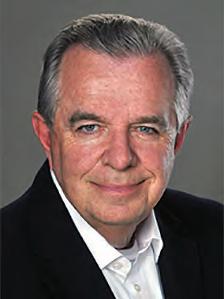
Leadership isn’t just something you do, it’s someone you become. And that requires a personal transformation, not just a personal agenda.
Roger hadn’t learned that lesson. During an interview for a new leadership position, he was asked why he switched jobs, and sometimes companies, every three to five years.
Roger blamed the employees who stopped growing and doubted the board’s commitment to the goal it asked him to reach. In other words, it had to be the environment because Roger was a “good” manager. Roger was half right – it was the environment. But he failed to recognize that he was responsible for creating that situation…the environment.
Lasting leaders, those who can weather economic downturns and even seismic market shifts, such as faced by the private club industry several years ago, are the ones who know how to assemble a diverse team and bring out the team members very best.
If we want to understand what really defines leaders then we have to start by looking at their followers. The old motivational tricks no longer work. Employees have become jaded from broken promises and failed dreams.
Today followers are drawn to leaders who show openness, invest time, listen, encourage and show appreciation for the strengths their employees bring to their work.
These are qualities that are developed intentionally over time but they pay dividends in both financial and personal performance for a lifetime.
Leaders who are held in the highest esteem for their success on both the bottom line and with the people they lead epitomize these five qualities. From their followers you will hear phrases like these: “He was always there for me.” “I felt like she really listened”, and “He valued my opinion.” The result is employee engagement at the highest level. These qualities are gifts that a lasting leader is willing to give freely to the people they lead.
The gift of being open to others. Every leader claims to have an open-door policy. But it’s not a leader’s door that needs to be open – it’s an open mind that matters! Openness encourages employee engagement, and that is fundamental to business success.
The gift of investing time in others. Leaders are usually not solo inventors or lonely creative thinkers. They assemble a team of people and enable them to be more productive together than any of them could be alone.
The gift of listening to others. Trust between leaders and their associates is built upon a transparency that reflects a freedom to speak and be heard. Bad culture, where listening isn’t valued, impacts business every day. As much as 55 percent of a leader’s work time is spent listening. But most confuse listening with hearing. When leaders invest the time to hear their employees then they are more apt to understand what they are saying and, sometimes more importantly, what they are not saying.
The gift of offering encouragement to others. Employees can work for hours without food or water. But they can’t do quality work for more than a few minutes without hope – the hope that their work matters… that they can get the job done and that their boss will appreciate their effort.
The gift of expressing appreciation for others’ abilities. When a leader gives away genuine appreciation it is mirrored back in improved attitudes, stronger commitment and better performance. Lasting leaders know how to bring out the best in others.
You can be appointed someone’s boss, but not their leader. Your followers ultimately determine your leadership. BR
Barry Banther is the founder and CEO of Banther Consulting. Barry’s book, “A Leader’s Gift: How to Earn the Right to be Followed,” is available. For more information, please visit www.barrybanther.com.


Bill Boothe
Wireless technology is fast becoming a required member amenity at many private clubs. Members expect to have Internet access through their mobile devices when they are in and around the club facilities. And not just access, but fast and reliable access.
Plus, clubs are increasingly using wireless POS devices in the dining areas, and wireless bridges to connect distant club facilities. Yet, many club managers know little or nothing about this important technology.
To test your own knowledge, here is a 10-question test we use at the conclusion of our wireless technology course for private club executives. Answer the questions and see how well you do…
Circle either true or false or choose the correct, or when required, incorrect answer.
1. (True/False) Wireless is used to connect PCs and mobile devices where a wired connection is not practical or cost effective.
2. Wi-Fi wireless access points:
a. Can handle up to 32 devices.
b. Can connect to devices up to a mile away.
c. Are not affected by walls, ceilings or floors.
3. (True/False) The club’s private wireless network must always be separated from the public wireless network.
4. The current 802.11n Wi-Fi standard:
a. Is backward compatible with 802.11b and 802.11g devices.
b. 802.11b devices can slow down an entire 802.11n network.
c. It is best to only purchase 802.11n devices going forward.
d. All of the above are correct.
5. The public wireless trend in private clubs is to:
a. Provide coverage only in selected member areas.
b. Provide full coverage in all member usage areas.
c. Provide coverage only in high-usage areas.
d. Provide coverage only inside of buildings.
6. A Wi-Fi network for your club:
a. Can be installed by anyone with a little bit of computer knowledge.
b. Can be purchased at a retail store near you.
c. Is a relatively expensive investment compared to the member value it provides.
d. Should use commercial grade equipment installed by qualified professionals.
After taking this test you may be asking: “Do I really need to know wireless technology to this level of detail?”
Our answer: Absolutely yes.
Gone are the days when club managers can completely delegate technology planning and decisions to someone else. Managers are expected to have a working knowledge of F&B operations, golf course management, retail operations, accounting, human resources and all of the other major functions of a private club. And now technology. No more free passes on this topic. Not knowing technology
7. Which of the following is not required for Wi-Fi security?
a. WPA2.
b. User access passwords.
c. Port-to-port security.
d. Internet and SPAM filtering.
8. Which answer below is INCORRECT for Laser (FSO) technology?
a. It is used for distances of 200 - 2,000 yards.
b. It must have clear line-of-sight.
c. It can only support 2-3 users.
d. It may be a better option than leased telephone lines or fiber optic cable.
9. Which answer below is INCORRECT for Long-Haul RF?
a. RF can transmit through thick trees and over hills.
b. RF can transmit up to 30 miles.
c. RF requires a radio license to operate.
d. RF can use a relay station to overcome obstructions.
10. A Mobile Hot Spot:
a. Provides very reliable high-speed cellular access.
b. Essentially works the same as a traditional WAP.
c. Is used to connect to the Internet when other WAPs are overloaded.
d. Holds little promise in the future.
isn’t just an inconvenience, it can be downright hazardous – to the club and to the manager’s career. Take the time to learn the basics. You’ll be glad you did! BR
(Quiz Answers: 1-True, 2-a, 3-True, 4-d, 5-b, 6-d, 7-b, 8c, 9-a, 10-b.)
Bill Boothe is president of The Boothe Group, LLC, an independent consulting firm that helps clubs understand computer technology, make good decisions and receive the highest value from their technology investment. Bill can be reached at bboothe@boothegroup.com.


In the hands of a professional storyteller, there is no stronger medium than video for highlighting the history of your clubhouse, the friendliness of your team, the intricacies of your greens and bunkers, or the distinctiveness of your culture.
Add to this that according to Forbes Insights, most executives prefer watching video to reading text; that according to Unruly, video increases purchase intent by 97 percent; and that according to Marketing Week, videos significantly increase exposure on Google.
While budget video producers can get you a (budget-looking) production for well under $50,000, for most clubs, professional cinemaquality video has been far out of reach, with the typical agency-produced spot costing closer to $350,000. Want a semi-popular song as your background music? You’re looking at another six figures just for the licensing fee. Want to air it on local TV? Expect to pay $1,000 for a 30 second spot… every time it airs.
Thankfully, disruptive technologies are changing the way we produce and distribute video. For the first time, both premium quality and inhouse videos are feasible additions to member and prospect communication strategies. Here’s what you need to know.

1. Plan Way In Advance
Talented crews (even small, agile ones) are constantly in demand. If it’s late summer, and you start now, you might not get a film crew till half the leaves have fallen. Consider how your grounds look throughout the year. Will the grounds be lush? Flowers in bloom? Pool open? Construction?
2. Determine Needs From an Agency
What needs to be captured by the professionals? Event and dining venues? Your golf course? What can you do later through a cheaper local service? Real estate? Club tournaments? What can your own team capture? Golf tips? Announcements?
3. Find a Disruptive Agency
A clever agency will use disruptive technology like a $30,000 octocopter (carrying the same camera used for filming major motion pictures) in place of a $2 million helicopter doing the same thing. They’ll work with emerging artists to find music that won’t break the bank. They’ll help you prepare volunteer members and staff instead of hiring expensive models and background actors. They’ll bring in a photographer to update your photo collateral at the same time. In short, they’ll save you hundreds of thousands of dollars without sacrificing effectiveness.
4. Create In-House Content
Get members reading your newsletter and logging into your website by incorporating video content. For a nominal investment, you can have your own simple in-house setup for capturing testimonials from members, interviews with the chef, tips from the pro, fitness equipment tutorials, and announcements from the general manager. Get members engaged in governance by using video to educate them on important issues with which they may be grappling.
5. Repurpose Pro Footage
Get the most out of your investment with video backgrounds on your website, interactive course tours, prospect kits, landing pages, and highly targeted distribution on popular video sites where different cuts play to different audiences (e.g., brides, professionals into golf, etc.).
Need help? I happen to know some pretty talented videographers… Get in touch at VideoMarketing@MembersFirst.com BR
James Cobalt is the senior marketing manager for MembersFirst, an award-winning agency offering consulting, web design, video production, and online reservation systems. He can be reached at (508) 310-2320 or via email at jcobalt@membersfirst.com

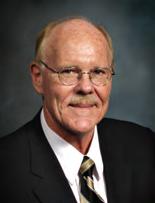
jerrY mccoY
“If you show him someone who is smiling, cheerful and optimistic, then he will show you someone who has no idea what’s going on,” quipped Cy the Cynic, a newspaper bridge column character, in a recent article I read.
Unfortunately there are too many people serving on club boards that mirror the attitude of Cy and they are the real cynics that slow progress and damage the organization.
How many times have you heard a board member say, “That won’t work here, we’re different.” They fall back on perceived club cultural habits to defend their position. They discount time tested business and club industry ‘best practices’ as out of touch with their club culture. When energetic, pro-progress volunteer leaders attempt to question past habits these directors argue so hard they suck all of the air out of the room.
Unfortunately, many times the problems clubs face are directly related to cultural habits that can have destructive results. Our cynic directors may argue:
• We don’t need to survey the membership; we know what the members think
• We don’t need to waste our time planning; we know what the issues are
• We are a golf club first; we don’t need to improve the pool and fitness center
• We need to just keep cutting expenses, not raising dues
• We can’t just nominate one candidate for each slot on the board; we must have contested elections to make it fair
• We are debt free; we should not borrow any money for anything except a real emergency
• We need to get more people using the dining room so we need to keep raising the food and beverage minimum
• Saturday morning is for men only, we can’t allow women to play.
Unfortunately many clubs have facilitated their problems by electing weak presidents or, God forbid, elect presidents who themselves are
the cynics. They have had weak general managers or have tied the GM’s hands. These clubs may have allowed committees to run wild. They have lacked continuity of leadership and each new group takes the club down a new rabbit trail based on someone’s personal agenda.
OK, let’s stop here for a minute and say that there has been significant progress in club governance industry wide. Decades ago a majority of clubs faced governance problems. Today a majority of clubs have solved most of those problems. However, there are still a lot of clubs that have not come to grips with the underlying issues that are setting them back.
That we regularly see new, energetic, proprogress leaders taking charge is a real positive. They are redefining club culture, establishing new business practices and positioning the club for clear progress in the future. For those who are just starting, we offer the following ammunition to continue to fight the good fight. So let’s look at some solutions that may benefit these new leaders.
1. Get a copy of The Director’s Guide for Understanding Club Governance. This handbook is a 60 page comprehensive look at all aspects of club governance. The handbook identifies 60 best practices…part of the Governance Checklist companion document that allows a club to audit governance practices and adopt those that are appropriate for your club. The guide is available at cmaa.org/market/marketplace.
2. Invite the Cynic to a meeting of your friends that are all pro-progress and discuss possible effective changes to on-going destructive cultural habits. Ask the Cynic to provide their opinion regarding issues and open a dialogue with them regarding your opinions.
3. Build a coalition of like-minded board members. Contact individual board members and have discussions soliciting their support for your proposals. Get the votes in advance so that, however the discussion goes, you have some confidence that the majority of the board will support you.

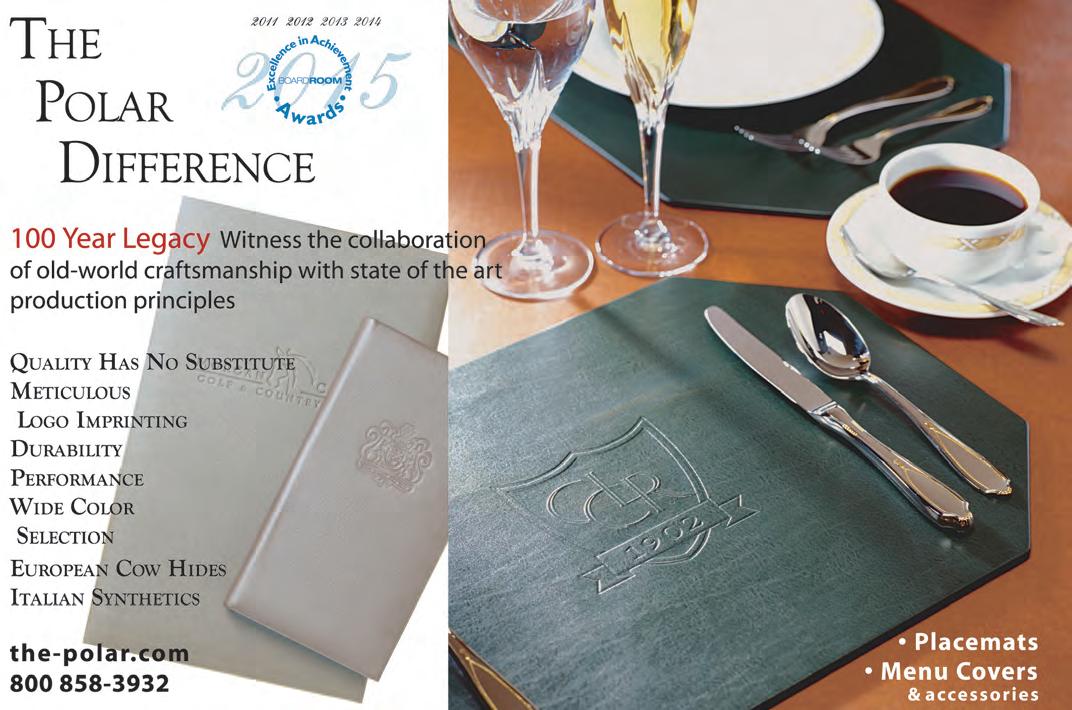
By Dave White, Editor, BoardRoom magazine
BoardRoom magazine annually recognizes the world’s top private club presidents, captains and chairs as Private Club Presidents of the Year, for their outstanding work, their understanding of the industry, and role and responsibilities of the club’s board of directors. In this continuing series, BoardRoom introduces four of the top 22 presidents for 2014.
Private club board presidents play a huge role in professional operations of their clubs as a volunteer working diligently with their board of directors and general managers, striving for well informed, but not emotional decisions.
This recognition by BoardRoom magazine has attracted board president nominations from clubs and other nominators around the world.
These outstanding presidents exemplify the focus on the leadership responsibilities, the accountability and the management of the board providing a healthy respect for the club’s macro management. They are cognizant of the importance of working, effectively and efficiently, with their volunteer boards and the dedication required from everyone with whom they work.
Key elements of a “good” board include commitment, competence, diversity, collective decision making, openness, transparency, effective communication with the management and the membership, fiscal responsibility, development and establishment of the clubs’ mission, vision and policy direction, especially through establishment of a strategic plan.
A successful board president draws upon the expertise of other board members, the club’s institutional memory and stewardship of the club’s resources. As well the board president provides new board members and future board presidents with information they need to perform effectively as board members.
Congratulations to these outstanding private club board presidents.
Five club president profiles on page 58 and 59
Sponsored by





“our club is doing better today considering all aspects of the club, than it has done over the past eight years, because we all know the difficulties golf clubs have faced in the past decade.”
and that’s how tom tempel has described his activities as the club’s president in 2014. tempel outlined the fact that the club has been recovering, both in terms of members and finacials.
“We had a severe problem in 2008, over 200 members left and our finances were a problem,” tempel explained. the club by the end of 2014 ended up in a much more positive position, and “we instituted a new members and business plan starting in 2015, and anticipate a much better year, “ tempel added.

One of the truest signs of a great leader is how they handle pressure when facing with adversity.
In 2014, Boulder Country Club experience challenges never seen before, including catastrophic floods, personal tragedies for several key personnel and gas outages during the coldest weekend of the winter, which resulted in extensive damages and loss of revenue.
President Chuck Wibby faced the challenges head on showing his effectiveness as the club’s leader. Wibby,
the club from a low of fewer than 200 members in 2008 by october 2014 had regrouped to about 350 members. “We’re focused on both recruiting and retention,” tempel added, while expressing strong support for chip chamberlin, the club’s general manager and Pga professional who was charged with developing the club’s business plan. the board approved the plan, which is now in effect and working.”
another major accomplishment for tempel has been his ability to focus the board of directors on strategic planning while allowing the general manager to management the club’s daily activities.
“today there’s no micromanagement from the board or pesky members,” tempel expressed. tempel also found Boardroom magazine to be helpful during his term.
“During my year as President of our club your magazine was my Bible, there is always so much good and timely info in each issue,” he explained.
it’s been most helpful especially reading articles and then talking with authors. they’ve been helpful mentors to me.
“i have also learned that while a club may have some very good business and financial experts on the board, they often know very little about the details of managing a club on a daily basis, “ tempel stated. “so if we each do our thing and work as a team to support out most important asset…the members, our club will continue to do very well,” tempel said. BR
through the club’s board of directors spearheaded a fundraising effort to assist staff members who experienced loss in the flood. Club members stepped up and raised over $30,000 in short time.
“It’s truly one of the most incredible events I’ve seen in my 23 years of club management,” explained the club general manager Michael Larson. “The club truly took care of its employees with Chuck Wibby leading the way.”
It’s been indicative of how President Wibby has provided leadership. When assuming his role as president, Wibby took the opportunity to restate to board members and club mangers his overall goals for the year, giving everyone clear direction.
“Chuck Wibby has also done a tremendous job of leading the board in working as a team,” Larson said. “He researches challenging and sensitive items before board discussions, allowing the board to consider all aspect of any major topic and working together to come to a solution that’s in the best interests of the club and individual members.
“His leadership has allowed the board to face some challenging situations with extreme integrity and confidence that the board has made the right decisions or taken the right action.”


change at a private club is never easy, but at times very necessary.
and much has happened at the scarboro golf club during the past three years, including 2014 when Brenda tilley took the reins as the club’s president. her term ends in january 2016.
President tilley joined the board in 2010, chaired the membership committee, before taking over as vice-president in 2012. activities in recent years have included the hiring and integration of neil rooney as the club’s chief operating officer, with tilley as a member of the search committee.
there’s also been a complete overhaul of the club’s governance from that of an operating board to a strategic board. standing committees have been reduced to four from 12; the board has been cut from 12 directors to nine and the club’s superintendents chairs the grounds committee, the head professional chairs the golf committee and the club’s marketing manager chairs the social/house committee.
“this restructure spoke volumes to the board’s commitment to hire professionals to run the club, keep out of their way but hold them accountable for results, “ explained the club’s coo rooney. “With this governance model, we kept operating committees under management control so the board could focus on strategic issues.
The club’s members have obviously noticed this strong leadership as the club has experienced increased membership satisfaction and confidence in the board.
“We’ve seen less than a one percent attrition rate for over a year, resulting in a multi-year waitlist for full golf, and this is in large part because of Chuck Wibby’s leadership,” Larson explained.
President Wibby also initiated a change on the process of how the club’s general manager/COO’s performance is reviewed each year. Board members were asked to submit a review based on their individual experiences with the GM, and to also set goals for the following year. He consolidated all this information into a complete review, allowing each board member to work as a team with the general manager.
“Brenda is a no-nonsense leader, she quickly drills down to the important issues, tackles them without hesitation,” rooney added. “ But she also brings a great sense of humor to the table, which i think allows her to resolve some very tough issues by being inclusive, engaging but not so serious that people lose sight of the primary objective – to improve by making decisions that are in the best interest of the club.”
scarboro golf club has also embarked on development of a strategic plan, which marked the first step in deciding to move from an equity model to non-equity. there’s been formulation of the ambassador group – the club’s opinion leaders and influencers – to encourage debate and dialogue with the club’s general membership. eighty percent of the club’s members voted on the club’s move from equity to non-equity, which was approved by 97 percent of the voting membership. there’s also been a restructuring of $6.8 million worth of promissory notes.
“these restructuring changes signify huge accomplishments,” rooney explained.
“Were we not to change, the club could not survive. that is an unfortunate but realistic fact. the industry has already changed. Despite all the changes already adopted, we must continue to evolve,” rooney added.
scarboro golf club currently sits with 1,066 members (the highest in five years), including 101 new members this year.
“Brenda tilley will be the first to admit this sort of change does not come about because of one person. her predecessor and past president gary oborne was very involved in 2012/13. her vice-president Dan hirsh really played a pivotal role in leading the change and particularly assisting with the complex legal challenges,” rooney commented.
however, it’s obvious that strong leadership is what brings it all together and that’s what Brenda tilley has provided to scarboro golf club during her time as president and a major reason she is one of Boardroom’s top presidents for 2014. BR
“This marked the first time I experienced this review method during my career, “ said GM Larson, “but really came to appreciate the process as it allowed me to work alongside the board. Chuck Wibby has shown me firsthand what it takes to be a great leader…and also now my ability to grow my own leadership qualities,” Larson explained.
“Our club has seen many great successes and overcome some great challenges under President Wibby’s leadership, but his strong legacy ensures that Boulder Country Club will continue to set the standard for a firstclass operation and outstanding member experience for our members.” BR

The ASGCA Foundation has a new look! The American Society of Golf Course Architects (ASGCA) Foundation, the philanthropic arm of ASGCA, has debuted its first-ever website, www.ASGCAFoundation.org.
A 501(c)(3) organization, the ASGCA Foundation helps those planning greenspace for recreational purposes understand how golf course architecture can increase player enjoyment, benefit the environment and grow the game of golf.
“We are excited to add this communication tool to the foundation,” said ASGCA President Steve Smyers. “For more than four decades, the ASGCA Foundation has made a positive impact on the game and those who play it. As we focus on expanding our programs, this site will help us communicate to supporters about the work the Foundation is doing.”
The site provides detailed information on a number of foundation initiatives, including scholarship opportunities – in partnership with The First Tee – and a number of publications to assist those seeking information about building a new golf course or remodeling an existing one.

The First Links program and internships are two additional areas of focus for the ASGCA Foundation.
First links: The ASGCA Foundation/USGA First Links program is for golf course owners/operators interested in reconfiguring their layouts and/or devoting open land to smaller scale facilities to allow new players to ease into the game.
The ASGCA Foundation launched First Links in 2012 with the PGA of America and now continues with USGA. It provides grants to applicants to pay for visits by ASGCA members to evaluate golf facilities for their potential to develop a short course or practice area, or to otherwise modify their existing layouts in a way to welcome new players. ASGCA member consultants will follow up their
one-day visits with a site evaluation report describing ideas for layout or open land reconfiguration.
The ASGCA Foundation has a long history of promoting golf courses to welcome new players to the game. More than a decade ago, the foundation published Dr. Michael Hurdzan’s “Building a Practical Golf Facility,” which recognized dozens of affordable, accessible courses in the U.S. and Canada as leading the way in attracting players, and which described how to develop such facilities. First Links complements this well-received work.
To date, more than two dozen golf courses across the United States have taken advantage of this free opportunity to bring an ASGCA member on site to tour their facility and provide detailed feedback on possible areas of improvement and growth. Grants may be awarded to any type of golf facility (public, private, municipal, etc.).
Grant selection is based on a variety of criteria, including how many applications are submitted and overall program resources (financial and availability of participating architects).
Complete First Links information can be found at http://asgcafoundation.org by clicking on First Links on the navigation bar, or email Aileen Smith at aileen@asgca.org.
Internships: The ASGCA Foundation continues its commitment to golf’s future by funding summer internships for up and coming design students in the design studios of ASGCA members.
Many ASGCA members got their start in the offices of practicing golf course architects, and the ASGCA Foundation offers today’s aspiring architects the opportunity to learn on the job.
“This is an exciting way for today’s ASGCA members to connect with the future of golf course design,” said ASGCA Foundation President John LaFoy. “Those who were mentored early in their careers remember the great impact it had on them to work with a professional and learn both the art and the business of design. The ASGCA Foundation is providing a chance for today’s young architect to gain that same experience.” BR
For more information about internships, email Aileen Smith, aileen@asgca.org. And to learn more about how to support these and other grow-the-game programs, visit www.asgcafoundation.org.

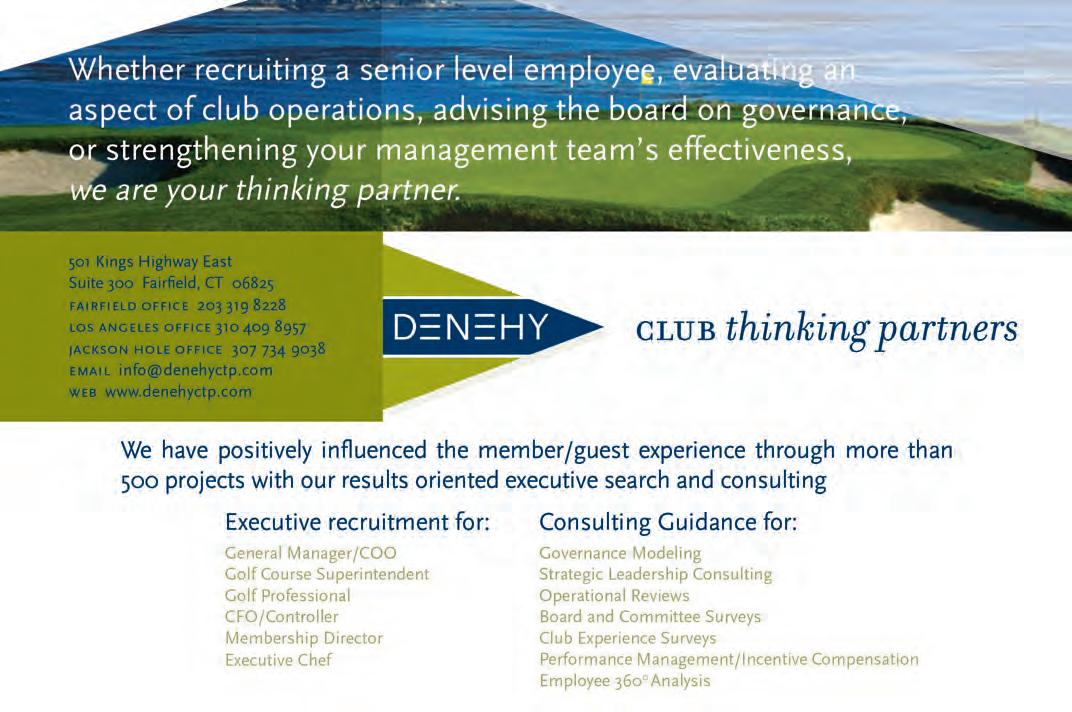


Starting a new management position can be extremely demanding, even for a highly regarded, well-seasoned manager or executive chef.
The pressure of building a team foundation with an existing staff, together with the high expectations from the members and upper management, requires planning, commitment and follow through.
If your department head is fortunate to start their new position in the off-season there is time to adapt and make changes. However, if the manager starts in the busy season expect a very challenging two to three months, and please be extremely supportive.
Consider the new executive chef. Being organized is imperative in a chef’s career and essential in the early stages of a new job. Everyone, from dishwashers to the general manager, is observing the chef’s techniques. Although that pressure is constantly present, it is crucial to focus on the kitchen’s performance and successful execution.
Below are suggestions that we share with our executive chefs, which also are applicable to all manager new hires. Share the list with your new executive chef or other department head to help them stay focused and organized when starting their new position at your club:
• Start your day with an early morning workout and eat a healthy breakfast. You may not have time during the day to eat.
• Create a “to do” list at the end of every day before you leave the club, outlining the necessary accomplishments for the following day. This will allow you to start your morning organized, efficient and productive. You may want to take a page out of Charles Schwab’s book (the Bethlehem Steel President who, at the recommendation of an efficiency expert, greatly improved the productivity of his sales team by each day having them write down the six most important tasks (in order of importance) they wanted to accomplish tomorrow. It worked in 1918 for Charles Schwab’s team and it works today.
• Evaluate and train your sous chefs, line cooks, etc. Delegate the sous chefs’ responsibilities and
convey your expectations. This will enable them to be more resourceful and make the kitchen more efficient. It will also allow you to concentrate more on the overall operation. This is also applicable outside the kitchen with servers, bussers, golf course maintenance personnel, etc.
• Meet with each member of your team oneon-one to understand their needs, priorities and motivations. The best managers understand what makes each of their employees “tick” and use that information to get buy-in and motivate each individual. Communicate your expectations and help each member of your team plan a course for their future.
• Take notes during meetings. Twelve to 14 hour days shorten our memory. Jotting down important points will help you remember those details throughout the day. Carry a small notebook with you at all times to jot down anything you need to follow up on throughout the day.
• Focus your attention to where you will see the best results. If a particular restaurant within the club is popular, center your attention on that venue. This can apply to banquets as well. All members desire immediate results from their new chef, performing at a high level in the spot they frequent the most will give you positive feedback.
• Build your team. If you are unable to hire staff members that have previously worked with you, it is important to quickly identify the key two to three most talented and trustworthy people.
• Establish a relationship with chefs and managers working in your area with a quick call to introduce yourself.
• Show appreciation and write a letter to all the members and introduce yourself. Thank them, the GM and the board for hiring you.
• Be realistic about time management. Manage your time wisely and make time to be with your family. Support at home can be crucial to you success on the job and a quality life in general. Burn out can easily occur because the “to do list” never seems to end. The first wealth is health!!!



sPecial to BoarDroom magazine
The spectacular views of the finely manicured and well-maintained fairways, tees and greens are one of the best features of living on a golf course.
Unfortunately, maintaining perfectly manicured golf courses doesn’t come easy for most clubs in South Florida, especially where frequent heavy rains continually wash out bunkers.
So St. Andrews Country Club, a BoardRoom Distinguished Emerald Club of the World, in Boca Raton looked to the installation of the Better Billy Bunker System as a solution…and it has made a difference.
“Since initiating the system we’ve seen a significant difference in the reduction of maintenance and labor cost,” explained George Kervern, the club’s director of course and grounds.
“In the past we used the same conventional drainage system as everyone else, and experienced the same problems with bunkers washing out. The installation cost for this type of bunker is high, but knew we’d save money on bunker repairs, sand and sod in the long run,” Kervern added.
It’s extremely labor intensive to repair sunken bunkers, sometimes taking a few days just to put the sand back up on the bunker faces. Frequent wash outs also cause the sand to become contaminated with soil from the bunker edges, causing the playing conditions of the bunkers to vary, and resulting in slow or a complete stop of drainage. Aesthetically, the sand is no longer white and becomes a darker color, which is not visually attractive.
These challenges have caused certain holes or even entire golf courses to be closed to the membership affecting the convenience of golf play.
The Better Billy Bunker System, highly recommended by the Arnold Palmer organization, had shown great results at other clubs and St. Andrews Country Club has seen great improvements since the installation.




“It also helps alleviate some of our most severe bunkers problems, where steep faces were not only washing out, but also collapsing along the edges when it rained,” Kervern stressed.
The system works by moving water out of the bunker faster, which stops the bunkers from washing out. The entire bunker becomes a drainage system instead of just having the typical herringbone style drainage system in just the bottom of the bunker.
With the entire floor of the bunker acting as a drain, any water is moved into the drain lines faster delivering an efficiently drained bunker, from the faces all the way to the floors.
“Our main goal is to protect our promise of providing exceptional service and an unparalleled lifestyle to our members,” stressed Craig Martin, the club’s general manager and COO. “By incorporating the Better Billy Bunker System into our golf course maintenance routine is just another example of our commitment to brand excellence.” BR



There’s something for everyone at the Palo Alto Golf and Country Club, a BoardRoom Distinguished Gold Club of the World, and it’s sure a hit for the kids.
The Palo Alto, CA club features everything from kids’ golf to swimming to tennis, to summer sports camps and a couple of other very enterprising programs: Kool Kids Club and the Tween Series.
The club currently serves 416 full members and another 175 social members.
“Kool Kidz Club program is designed for members ages seven and up. We want them to learn about club rules and etiquette and embrace the club culture independently,” explained Palo Alto’s youth director Pilar Oldham.
“During the process of becoming a Kool Kid, our members will go on a club tour with our youth coordinator, learn about policies in all areas of the club, and have an opportunity to meet our junior tennis, golf, swim and dance coaches along the way.
“After the orientation there’s a short quiz, a scavenger hunt and a prize. Once the orientation is complete our Kool Kidz have the privilege of using our youth room without supervision, playing tennis, begin to play golf, and use our locker rooms. They also can register for any youth events or after-school activities,” Oldham added.
By understanding what they can and cannot do in the kids-designated room, it allows the kids to take ownership of the room and its amenities.
“We’ve also challenged ourselves to be the best club for tweens, “ Oldham commented. As a result the Tween Series has become Palo Alto’s most popular youth series at the club.
“We surveyed tweens (ages 9-12), held brainstorming meetings and researched middle school trends across the country. We discovered the secret to tweens is being ‘cool,’” Oldham added, “so our Tween Series is comprised of the coolest events we can imagine.”



By using unique spaces, incorporating an aspect of adventure and creating events with friendly competition, the Tween Series was born. Not only do Tween members look forward to each event, but also the club’s younger members can’t wait to turn nine so they too can attend the ‘cool ‘ events.
Our club had the foresight to build a 36,000 square foot family fitness center to accommodate families,” explained general manager Dirk Zander. “We wanted to attract new families and also have a place where kids can hang out. It’s been a win-win for us,” he added.
“We’ve really focused on our Tweens and all staff members in this center have childhood education in their background. They’re really big kids…and that’s another plus for us,” Zander said
“While some people know us for our golf course, or our food, to our kids 9-12, we are cool,” Oldham concluded. BR



the BoardRoom magazine “Excellence in Achievement” Awards is the only private club industry award that recognizes the clubs’ business partners. Boardroom magazine’s industry peers review and select these outstanding suppliers and consultants, which represent various aspects of course and club operations.
Winners, each year, are selected for overall excellence in their respective fields, achievements, innovation, vision for future growth and continued impact on private club operations.
“each of the recipients of the BoardRoom magazine “Excellence in Achievement” Awards are clearly leaders in their respective industries,” said john fornaro, publisher of the Boardroom magazine.
the Boardroom magazine is the only publication of its kind that is designed to educate the board of directors, owners, general managers and department heads of private golf, city, yacht, tennis and country clubs about issues concerning all aspects of the club, golf course management and operations.
AMENITIES PROVIDER OF THE YEAR sports solutions, inc.
APPAREL PROVIDER OF THE YEAR high end uniforms
ASSOCIATION PROGRAM OF THE YEAR, hftP
BANQUET EQUIPMENT OF THE YEAR spring usa
BANQUET SUPPLIES COMPANY OF THE YEAR event equipment sales
BOARDROOM MAGAZINE DEDICATION AWARD
jeffrey P. mcfadden (tie)
Daniel m. Denehy (tie)
CASUAL DINING ROOM DESIGN OF THE YEAR
Peacock + lewis
architects and Planners

CLUB PROGRAM OF THE YEAR Kecamps
CHINA PRODUCT OF THE YEAR graham marquis
CLUB MANAGEMENT FIRM OF THE YEAR troon golf management
CLUB MANAGEMENT SOFTWARE OF THE YEAR northstar club management software
CLUB SERVICE PROGRAM OF THE YEAR resortsuite
CLUBHOUSE ARCHITECT OF THE YEAR marsh & associates, inc. (mai)
CLUBHOUSE DINING ROOM DESIGN FIRM OF THE YEAR ferry, hayes & allen Designers, inc.
CLUBHOUSE INTERIOR DESIGN FIRM OF THE YEAR c2 limited Design associates (tie) image Design (tie)
CLUBHOUSE SIGNAGE OF THE YEAR signera - Digital signage
CONSULTANT COMPANY OF THE YEAR Prevo health solutions
SUSTAINABILITY PROGRAM OF THE YEAR ses lighting
EXECUTIVE SEARCH FIRM OF THE YEAR Kopplin & Kuebler
FERTILIZER FIRM OF THE YEAR grigg Brothers
FITNESS CENTER DESIGN OF THE YEAR Peacock + lewis architects and Planners
FOOD AND BEVERAGE MANAGEMENT
SOFTWARE OF THE YEAR fooD-traK/system concepts, inc.
FURNITURE MANUFACTURER OF THE YEAR gasser chair company
GARY PLAYER EDUCATOR OF THE YEAR frank vain (tie) robyn nordin stowell (tie)
GOLF COURSE MAINTENANCE FIRM OF THE YEAR international golf management (igm)
GOLF COURSE DESIGN george golf Design, inc.
HUMAN RESOURCE CONSULTANT OF THE YEAR modern Business associates
INSURANCE PROVIDER OF THE YEAR golf insurance services from epic
INTERIOR FURNISHING hint/harris interiors
KITCHEN & FOODSERVICE EQUIPMENT DESIGN OF THE YEAR
D.e.i. food service equipment & Design
LAW FIRM OF THE YEAR addison law
LIFETIME ACHIEVEMENT 2015 Donna coyne (tie) linda Blair (tie)

LINEN PROVIDER OF THE YEAR something Different linen
LOCKER FIRM OF THE YEAR salsbury industries
LOGO APPAREL AND DESIGN PRODUCT OF THE YEAR stratton crooke enterprises inc.
MASTER PLANNING
marsh & associates, inc. (mai)(tie) chambers (tie)
MEMBERSHIP MARKETING FIRM OF THE YEAR creative golf marketing
MEMBERSHIP SURVEY mcmahon group
MENU COVERS OF THE YEAR Polar accessories
MID-MANAGEMENT SEARCH FIRM OF THE YEAR Kopplin & Kuebler executive search
MEMBER COMMUNICATION TECHNOLOGY OF THE YEAR clubster
OUTDOOR COOKING EQUIPMENT OF THE YEAR Big john grills & rotisseries (tie) crown verity inc. (tie)
OUTDOOR DINING ROOM jgra - james g. rogers architects
OUTDOOR FURNITURE OF THE YEAR lloyd flanders industries, inc.
PRO SHOP DESIGN OF THE YEAR marsh & associates, inc. (mai)
PAYROLL COMPANY OF THE YEAR clubPay
PHOTOGRAPHY FIRM OF THE YEAR ea Photography
PRODUCT OF THE YEAR zon technology (tie)
Private club historical (tie)
PURCHASING PROGRAM OF THE YEAR Xhibtz contract furnishings
REAL ESTATE SERVICES OF THE YEAR hilda W. allen real estate inc.
TAX CONSULTANT OF THE YEAR Kevin reilly, PBmares, llP
TECHNOLOGY COMPANY OF THE YEAR clubessential
TENNIS COURT BUILDERS OF THE YEAR Welch tennis courts, inc.
WEBSITE COMPANY OF THE YEAR membersfirst

My first thought about the ‘state of the industry’ is always about how broad a topic that can be. In recent times, we’ve seen many clubs experience a recovery from the great recession and grow membership and revenues and in some cases reinvest in the club’s facilities.
All that sounds good, but I remain concerned about the future of many clubs.
Recently, I joined two recent members of my club for a most enjoyable before dinner nineholes. Both were formerly members of a nearby club with an excellent reputation and highly regarded golf course. Despite having to pay a substantial initiation fee, they concluded it was worth it to join our club and leave their former club behind. Why?
Though it is generally accepted that our club has outstanding facilities, it is also significantly more costly in just about all areas to be a member. It all comes down to a question of value.
A number of years ago, I wrote that club membership success was “all about value.” This is still true, and simply having the lowest cost of membership doesn’t work.
At some point, keeping the cost down compromises the experience, and hence the value inherent in club membership. Certainly, there are price points for every club and market, and the higher the price, the more limited the market.
I played a better ball tournament recently with a friend who resigned his club of 28 years because the club was expanding facilities (F & B), which weren’t a priority to him. He opted not to pay for it. No matter what their market position, clubs need to identify their niche and strive for excellence therein, neither going beyond that nor falling short.
In today’s world of lower (or no) entrance fees, members show little loyalty. As most clubs have become integrated with a more diverse social and ethnic makeup, the low use member who may have joined to support the club or to socialize with members of the same community sees less reason to join.
If a member who decides that his interest lies in the golf experience sees excessive spending in other areas, there may be a more compatible club nearby. Some members (especially those new to golf or the private club experience) simply want a place with few rules and unlimited access. In big cities, there are often clubs for each type of member, and in smaller towns, the clubs often have to serve many masters.
What is of great concern to me is that some clubs, experiencing recover from the recession lose sight of the need to cultivate a high level of member satisfaction.
Understanding a club’s market niche and focusing on it is critical.
If your members want outstanding golf course conditions, or if they focus on gourmet dining, the board and management has to respond. Some clubs have almost no rules, while others are very strict.
What some members find essential, others find offensive.
Every club has its own “culture” that leadership and management need to be mindful of. No club is bulletproof and my stories prove that. You may have a board that ignores member feedback or a GM that focuses on their objectives and not those of the current and future members. That doesn’t work.
Value means different things to different people. It can mean the market value of a property, which is often what appraisers (like me) estimate on behalf of golf course clients. But the value of a golf course can be interpreted several ways – in relation to the value of one’s membership, for example, or what the consumer thinks a round of golf is worth. Still others perceive value according to the level of enjoyment experienced beyond the cost/benefit relationship.
Dictionary.com throws a pretty good blanket over all these when it defines value as “relative worth, merit or importance”.



BOB BODman
How many clubs have a set of standards of operation?
In 2004, we published The Standards of Operation and Performance for Private Clubs and sold hundreds of copies over the next several years, and later licensed our publication to CMAA for sale.
Suffice to say that hundreds of clubs have had a set of standards at one point, and most likely still do. However, how many of these clubs have their original set of standards sitting on bookshelf, in a drawer in the GM’s office or in a banker’s box in the coat closet…collecting dust? Again, it is probably safe to say that most do.
The effort to develop a customized set of club standards is usually fairly significant. Yet, it’s not hard to see why such a noble cause and Herculean effort falls victim to passive obscurity.
Developing a customized set of standards is no small task and it becomes even an even greater challenge to achieve a level of agreement on those standards. The greatest challenge, however, is putting them into operation and keeping them current. If the external reference documents are maintained, it gives the club a fighting chance of consistently managing to its standards.
This isn’t because of a lack of operational skill or intent, but primarily it’s caused by the complexity of managing the hundreds of external documents referred to within those standards. In an average club, there are more than 200 references to external documents – external meaning those items referred to within the published set of standards – such as: procedural manuals,
checklists, certificates, licenses, applications, guides, rules and forms, etc.
If a club has any hope of managing according to its set standards, it will need to identify and manage its external reference documents.
Let’s take one as simple as the “employee handbook”, which is a typical item in any club. Let’s just say that the line item standard for this is stated as: “The Human Resources Director will ensure that every new employee receives a copy of the Club Employee Handbook and maintains a record of receipt in each employee’s employee file.” A pretty simple standard, right? Handing out the handbook and getting the employee to sign the receipt is, of course an important task, but generally fairly easy to accomplish.
If you stop for a moment, however and think about the information contained within that handbook, you will realize that it has quite a bit of complexity and very important details. Even deeper consideration reveals that the document can easily drift out of date and keeping it current is essential to its purpose.
When was it created? Is it compliant? Who is responsible for maintaining the content? How often should it be reviewed and revised? When was it last revised? What were the key modifications made in the last revision? Do the longer tenured employees know about the new content?
This demonstrates that if something as basic, important and as fundamental as the employee manual is not tracked, reviewed and kept current, and communicated to the employees, then how likely is it that there are hundreds of other club (external reference) documents in the same condition. Managing according to a set of standards requires a dedicated system to manage the external reference documents.
What is so important about tracking the external reference documents to the effectiveness (i.e., keeping the dust off) of the club’s standards?
SEE MEMBERSHIP MARKETING | 77
Expect sales, retention and communication as the emphasis for private club membership professionals in 2016.
While the 2016 sales outlook is bright, we aren’t ready to break out the sunglasses quite yet…
As a general manager, your sales management tools will need to be sharpened. Staying ahead of your quarterly action plans, improved lead generation and closing techniques will help your sales professional stay ahead of the game as we expect to see sales stall in the last quarter based on unpredictable election outcomes.
In today’s highly competitive, technologyenabled world, building value for a prospect isn’t about giving them information. It’s about truly understanding their needs and delivering relevant solutions. Finding out what a prospect wants and needs precedes any attempts at selling.
This means salespeople have to be good listeners who ask the right questions, understand the prospects goals, deliver value beyond the services they are selling, and demonstrate the uniqueness of your club’s amenities and services compared to others.
Survey results indicate that 80 percent of prospects already know what they are looking for before they contact a salesperson. The value of a membership sale professional is overwhelmingly tied to their expertise. High levels of product and club knowledge will outpace personal relationships. Our prospects will expect us to understand them and anticipate their needs.
Annual turnover rates continue to grow, with more than 10 percent of membership directors leaving their jobs each year. Why? Employees may say it hinges on compensation, benefits and work/life balance, but when actually making the change, they report that greater opportunity and better leadership were the driving forces.
Clubs that make an investment in quality training and coaching have much higher rates of employee engagement, loyalty and productivity, and they’re more likely to attract and retain the best talent. The ‘developed’ employees also
achieve higher levels of performance, which leads to increased compensation.
Membership retention in 2016 will focus on making your club the hub of your member’s lifestyle –the home way from home. Classes, lectures, services and offerings need to make your member “card” the most valuable card anyone would wants to have. Partnerships for education, travel and products and services outside of sports will enhance the members perceived value in belonging.
In 2016 the communications focus will be on content marketing. Provide your members with information that builds trust, develops your brand, and ensure your team members are considered subject matter experts.
• 80 percent of business decision-makers prefer to get information in a series of articles versus an advertisement.
• 58 percent of consumers consider companies that produce video content to be more trustworthy.
What was once considered something “nice to have,” optimizing your club’s website for mobile devices has become a necessity and a valuable investment for the future. The main efforts of digital marketing are aimed at appealing to the Millennial generation, and hoping to persuade them to be members for life.
However, without an optimized digital presence on mobile devices, your overall marketing efforts will never reach their true potential.
Make it personal. Many retailers are very adept at this by tracking their consumers purchase history and therefore offering personalized discounts and special offers. Whether you only have the resources to create a personalized email campaign, or have the support to develop web resources that are able to target specific users or customer groups, it’s time to put a face on your member and treat them as individuals.
Makes cents to me! BR
Susan Greene is a 28-year veteran in the private club business. In 2012, Susan returned to her first love as director of membership and marketing for The Oaks Club in Osprey, FL. She serves as the National President of PCMA (Professional Club Marketing Association). She can be reached via email: sgreene@theoaksclub.com


Today’s membership director professionals are truly marketers, whether they carry the title or not.
They are professionals who have to be knowledgeable in all facets of marketing, including the technological resources. A customer management relations program was discussed in Part one of this series, and Part two addresses the indepth member survey.
Membership professionals can use an in-depth member survey to gather information that can be used to retain more members. Surveys in general are not perceived as fun, primarily because they require an individual’s time to submit information. They often are perceived as too time consuming and it must be decided if the actual information is beneficial or not.

In the private club industry we have to rely on the information from our members to provide the services, amenities and the culture members want and expect at their club.
The idea that we as service providers know what the member’s expectations are without asking them, and secondly, that we understand the many diversities that make up a club, and trying to please them all is absurd thinking.
Utilizing the industry tools and the resources to assist us with acquiring the end results is the
best course of action. Clubs often try to take on the task of an internal member survey to avoid the cost of having a professional survey done for them.
Member surveys are not and should not be a task done within. There are too many variables to take into consideration. For example, questions asked regarding member’s interests, open ended or closed questions, the member and family make-up and usage questions; all of the responses to these questions have to factor in the demographics of members, yet many surveys do not.
Member surveys done internally may ask good specific questions, however many offer very little, if any demographic information, therefore eliminating the opportunity for data to be collected, correlated and analyzed.
There is no way clubs can cross correlate the information in a timely fashion to return results back to those members. We also find that more members participate in surveys that are done online with no responsibility in returning the information other than to press submit when finished.
Statistics also show that more members will participate and speak more freely if they know an outside entity is responsible for analyzing and reporting based upon the membership responses as a whole and that the club is not directly analyzing their information.
Accurate data in a timely fashion allows the club to make creditable decisions for both the short and long term.
I strongly urge a quick peek at some of the simplest of technological resources that are at one’s disposal to work smarter not harder…you may be surprised on many fronts. BR
Donna Coyne is CEO/Placement Specialist, Professional Club Placement Services. She can be reached via email: Donna Coyne donna@pcps4u.com www.pcps4u.com
Marketing is pretty simple.
We move people from a “before” state to a desired “after” state. In the “before” state the customer is discontent in some way. They might be in pain, bored, frightened or unhappy for any number of other reasons. In the “after” state –life is better. They are free of pain, entertained or unafraid of what previously plagued them.
One of the fundamental issues we see when it comes to membership marketing is that the messaging only focuses on the features and amenities that a club offers its members. But people don’t buy products or services…they buy outcomes, or benefits. They buy access to the “after” state.
A great offer will genuinely move a customer to a desired “after” state, and great marketing simply articulates the move from the “before” state to the desired “after” state. Most clubs that are struggling are doing so because either…they fail to offer a desired “after” state (The offer is no good), or more likely, they fail to articulate the movement from “before” to “after” (the marketing doesn’t work).
If you’ve ever seen a commercial for Cialis or Viagra, then you’ve seen a perfect example of the articulation of movement from the “before” state to the desired “after” state. Very little is ever mentioned about what the product is or does. Instead…just bathtubs and sunsets. Needless to say getting clear on the desired outcome your offer delivers is fundamental to the success of your club. Here’s a quick way to get that clarity…
Before you make any further marketing decisions go through this exercise. Ask yourself these eight questions.
• What does your prospect have in the “before” state? What does your prospect have in the “after” state?
• How does your prospect feel in the “before” state? How does your prospect feel in the “after” state?
• What is an average day like for your prospect in the “before” state? What is an average day like for your prospect in the “after” state?
• What is your prospect’s status in the “before” state? What is your prospect’s status in the “After” state?
For example, consider a preview membership targeted primarily to new homebuyers in a highly transient area. It’s a fairly standard preview that allows people to join the club for a fraction of the price and they have six months to make the decision to join permanently or simply walk away.
But it does so much more than that.
People that buy this preview membership are transformed…
• From having no friends or local knowledge to having a network of new, friendly faces and a place to feel welcomed.
• From feeling insecure and stressed to confident and in control.
• From having an average day worried about the family assimilating into the community to feeling comfortable about their new surroundings.
• From a status of “newcomer” to a “local”.
Average marketing only articulates what a member will have if they join their club. Great marketing speaks to how a member will feel, how their average day will change and how their status will elevate. With this simple eight-question “before/after” grid you can create a marketing message that will have an impact.
The marketing message writes itself .
• Welcome to the neighborhood…we’ll make you a local in no time!
• Ready for one more ‘moving experience’? We’re the club that makes everyone feel at home.
• Say goodbye to moving stress. We’ve got just the thing to help get you settled.
• Your friends are already here.
This messaging clearly articulates how the club will move the prospect from a “before” state of stress and insecurity to an “after” state of security and happiness. Bathtubs and sunsets. It’s powerful stuff.
If you’d like to download our free step-by-step guide to defining your club’s membership value proposition, please visit www.clubmarketer.com. BR
Michael Phelps is principal and co-founder of Pipeline Marketing, an award-winning agency that creates unique marketing and sales systems for lifestyle-oriented businesses including golf courses and private clubs. Learn more at www.pipeline-inc.com or mphelps@pipeline-inc.com.



Attention will be on the Golf Industry Show Feb. 6-11 in San Diego, one of the most popular destinations for the biggest annual event in the golf course management business.
The Golf Industry Show happens to be one of my favorite weeks of the year, because it provides me and our entire GCSAA team with the invaluable interaction with members and industry friends. It gives us insight into the challenges ahead and helps us shape how we can best serve our members.
I’m particularly fond of San Diego because the 2010 Golf Industry Show in the California city was my first as part of the GCSAA staff. I had attended the GIS previously, but it wasn’t until I was part of GCSAA that I really got a feel for the breadth of the show and was able to appreciate everything that was going on. The atmosphere can be electric with so many different facets coming together under one roof.
All of these moving parts – the education conference, the trade show, the golf events, the networking – come together on a level that can’t be found anywhere else throughout the year. We feel a special responsibility for putting together this annual event, where each attendee learns and hopefully feels it was a good use of their time and money.
“I’ve been coming to the show for 16 or 17 years in a row, and this is going to end up being my best show ever,” said Robert Thorn, general manager of Inject-O-Meter at the conclusion of the 2015 GIS in San Antonio. “It was so busy that I was still working and talking to people until at least a half hour after the show closed.”
And the superintendents told me the same message.
GOLF INDUSTRY SHOW REGISTRATION
“I am sorry I waited so long to attend,” said Jeff Wilson, superintendent at Bandon Dunes Golf Course in Bandon, Ore., who has been a GCSAA member for 18 years but was attending his first GIS, in San Antonio.
“There are always new things to see in equipment,” said Brian Roth, CGCS at Oquirrh Hills Golf Course in Tooele, Utah, an 18-year GCSAA member who was attending his sixth GIS. “In education, I took a lot of general sessions. It was nice to have so many sessions to choose from.”
Our event offers opportunities for members and it is a chance to get together with our generous industry partners. GIS continues to be strong, with more than 14,000 attendees, more than 500 exhibitors and more than 380 hours of education. The start on Feb. 6 with a mix of fun and competition at the GCSAA Golf Championships, and will then move indoors for the educational seminars and trade show from Feb. 8-11.
Here are few of the highlights:
• The GCSAA Golf Championships (presented in partnership with the Toro Co.), played on five fantastic golf courses in the San Diego area.
• The opening session (presented in partnership with Syngenta) on Tuesday afternoon where we honor our award winners, including our Old Tom Morris Award winner Herb Kohler.
• An important roundtable discussion with industry leaders.
• The increasing role of GCSAA in advocacy for the golf industry will be evident in the education offerings and our Grassroots Ambassadors Boot Camp.
nov. 3 (Tuesday) – gcSaa member registration opens at www.golfindustryshow.com
GCSAA Golf Championships (presented in partnership with the Toro Co.)
Feb. 6-8 (Saturday-monday) – gcSaa golf championships
Feb. 7-8 (Sunday-monday) – gcSaa national championship
San Diego Convention Center
Feb. 8-11 (monday-Thursday) – gcSaa education conference
Feb. 10-11 (Wednesday-Thursday) – Trade Show
Feb. 11 (Thursday) – gcSaa annual meeting
And before we bring the curtain down on San Diego, we’ll celebrate with friends and laugh together at the closing celebration (presented in partnership with John Deere), where talented comedian and impersonator Frank Caliendo will perform.
Rhett Evans is CEO, Golf Course Superintendents Association of America.
Recently a golf course superintendent called to tell me he had been dismissed from all duties that morning.
I’m familiar with this golf club, and the heat had affected the greens this year. The superintendent was unable to bring them around until after the heat let up at the end of summer. By that time the members’ concern had taken its toll on the board, green committee and general manager. It was irreversible.
I asked the superintendent if the GM had his back. His answer? Yes. The GM allowed the superintendent to resign and was also working on a severance package for him. Both men maintained a high level of respect for each other and the dismissal of the superintendent was done in a professional manner. There was not a right or wrong and it was not a good-guy, badguy situation.
But it was a decision and action based on the circumstances over an extended period of time and all parties understood why the action was necessary.
I wrote about “Four-Way Management” in the Boardroom, September/October, 2015 issue, and I can say this situation was handled with “FourWay Management.”
The job of being a GM or superintendent is a very difficult one. At no time is every golfer or board member happy with both the condition and the management of a golf course. We all face criticisms and stress every day in our lives, however there are very few professions where the scrutiny is as intense and constant as in trying to maintain or manage a golf course property.
For a golf course superintendent to try and maintain the best playing and esthetically pleasing conditions, without the GM having his back to explain to the boards and golfing members exactly what he is doing and why, is a lost cause.
The GM must have the superintendent’s back to maximize the effectiveness of his resources and produce a course that everyone is proud of and can enjoy.
The same can be said for the GM except to a greater degree. The general manager needs to understand what the superintendent is doing and why, in order to keep the board and committees informed.
The GM needs the superintendent to have his back as well and both of them should be on the same page. The GM must also have the support and understanding of the club’s different committees, and they too should have his back.
Fact is, very few of us are able to succeed without someone having our back. BR
Dave Doherty is CEO and founder of the International Sports Turf Research Center, Inc. (ISTRC) and holds three patents regarding the testing of sand and soil-based greens. He can be reached at (913) 706-6635 or via email: daveistrc@ hotmail.com www.davedohertyistrc.com

Dave DOherTY


BrUce r. WIllIamS
Trends have developed over the last few years affecting the golf business, and while some are national there are others right now affecting only a few states but which potentially could become the rule rather than the exception across the country.
Undoubtedly the economy has initiated many of the trends, and with a change in the economic outlook golf is reacting both as a business and also as an industry.
We saw a tremendous amount of economic turmoil not all that long ago, a period where stocks declined and quite a few retirees saw their 401Ks diminish. This has resulted in an overall decline in expendable income. When people have to choose whether they buy food, send their kids to college, etc. or play golf and/or be a member of a club, the decision is obvious.
There was also fewer people playing golf, entering the game and making choices to play less golf. That decline has hit bottom and clubs and golf courses are now seeing a slight increase in rounds.
Golf clubs that were proactive during the recession have done well. A deep analysis of operations was required and where strategic plans were put in place those clubs have been able to survive a tough period. Budgets were cut, manpower reduced, new programs initiated, and downsizing and rightsizing became the norm. It is important however that we recognize when we have not only cut the fat but have also taken out some of the bone.
As a result of deferred maintenance and, in many cases, a slowdown or elimination of capital expenditures it will take some catching up to get golf courses at an acceptable level of standards.
There is no time better than the present to evaluate the golf course standards at your course and then be sure to provide the assets to produce the product you desire.
Golf course superintendents are amazingly ingenious and wonderful problem solvers. It has been interesting to see the many solutions that they have come up with during the recession to help keep their clubs afloat.
Be sure to make them a part of the strategic planning to ensure that you can meet your objectives. Operational budgets have been cut by as much as 50 percent and labor has been a large component of that.
We’re seeing new ways of using your people most effectively and efficiently. Once this happens, then an analysis of the gap between standards and resources in what it takes to deliver the best golf course you can afford becomes obvious.
Generally golf course equipment lasts an average of 10 years. So if you have $1 million dollars worth of equipment you should be spending $100,000 per year to keep your fleet at peak performance. As the old Fram oil filter commercial used to say, “You can pay me now or you can pay me later!” All clubs should have a plan to catch up and stabilize their fleets.
Beyond equipment there are other capital expenses on a golf course, including your irrigation system, buildings, and yes greens…tees….and bunkers. During the last two years we have seen numerous projects ranging from green construction, green resurfacing, adding of tees, leveling of tees, bunker reductions/remodeling all the way to full renovations.
The tremendous competition for players/members is the driving force behind these improvements and while these projects cost money they are surely an investment in drawing the best and finest people to your facility.
At private clubs the cost of initiation has gone down to match the inflow of new members. It gets down to supply and demand. In many cases the empty membership slots are declining and full memberships will result in raising the value of them as well as the price. It takes a great product to accomplish that and usually the number one reason people join a club is the golf course!
It is always good to share positive news. While golf absorbed a rapid decline it appears to have found a new baseline for the way the industry will function in the future. It is exciting to see new initiatives to bring younger players into the game. Creative golf professionals have also looked at growing the game with minorities and also engaging
from Plights and Insights | 36
rant, to an operator giving us a phone number – even for invitation or an event we are privileged to attend.”
In saying thank-you, one of the most important things is to be sincere. Experts advise having a sincere tone of voice, speaking clearly and really meaning every word. For example:
“Thank you for letting me to serve you tonight! It was my pleasure, and I’m really happy you enjoyed our coconut shrimp [or whatever you served].”
Club leaders spend a lot of time and money hiring and training their service staff. Unfortunately, that investment can go to waste if management doesn’t show its appreciation often enough. According to the U.S. Department of Labor, lack of appreciation is the number one reason that employees leave their jobs. It’s not benefits, bonus structure or salary. It’s simply feeling that their hard work is not recognized or appreciated.
According to Laura Trice, a professional counselor and coach, “most of us really do want to hear someone thank us for the things that we do, even if it’s something that
from Membership Marketing | 70
Consider for a moment what a standard is. According to the Oxford Dictionary, a standard is: “A required or agreed level of quality or attainment.” The importance lies in the operative words: “agreement” and “level of quality.”
With hundreds of members in a club, there are literally hundreds of views of what “good” and “excellent” are. When the standards collect dust, there is no real agreedupon norm being used. That’s pretty important!
Consider another definition of a standard : “A ceremonial flag carried on a pole or hoisted on a rope.” No dust on that standard! Combine the two definitions
ladies at a higher participation rate than before. Clubs need to strategize and plan effectively. Long-term thinking is important for success. As a club, work with your golf course superintendent to set standards and then provide them with resources to best accomplish the vision you have for your golf course. BR
Bruce R. Williams, CGCS is the principal of Bruce Williams Golf Consulting as well as Executive Golf Search, which specializes in headhunting for golf course superintendents and industry positions (www.EGSinc.net). Bruce may be contacted at Bruce@WilliamsGolfConsulting.com or (310) 991-9176.
we’re supposed to be doing anyway. Being appreciated is one of those things that really motivates us, both at work and in life, so a little goes a long way if you can offer up a genuine thank you when it’s appropriate.”
So, even if your club has a dining and beverage minimum that members are required to spend each month or annually, it’s important to thank them for dining.
And it’s equally important to show employees often that you value their hard work and contributions. Sometimes something as simple as saying “thank you” or writing a short, personal note to an employee can bring a smile to their face.
It’s like the “passing flash.” BR
Nancy Levenburg, Ph.D., is a professor in the Seidman College of Business at Grand Valley State University in Grand Rapids, Michigan. She is the President of Edgewater Consulting, and is a member of Spring Lake Country Club in Spring Lake, Michigan. For more information, contact her at: levenbun@gvsu.edu or (616) 331-7475.
together and you get something like: “An agreed upon level of quality hoisted up to be visible.”
Developing a customized set of standards is no small task and it becomes even an even greater challenge to achieve a level of agreement on those standards. The greatest challenge, however, is putting them into operation and keeping them current. If the external reference documents are maintained, it gives the club a fighting chance of consistently managing to its standards. BR
To learn more about how to develop and manage your club’s standards of operation, contact Bob Bodman, president of Club Resources (800) 267-6758 or via email: Bob@ClubResources.com

Chris was looking forward to a meeting with Jim, the club president. It had been a while since their last lunch, and Jim had seemed a bit distant recently, so it would be good to talk.
Chris stepped into the room and suddenly saw Jim, vice president Pat, Bill, the third member of the executive committee, and Cheryl, head of HR, sitting there.
A bolt of electricity shot through Chris’ body. The buzzing in Chris’ ears drowned out Jim’s next few statements: “Chris … change…we hope… about an hour.” New car payments, Chris’s daughter just starting high school, what about the house? How will the family react?
Soon Chris was back in the office, where two fresh cardboard boxes were on the desk, to be filled within the hour with eight years of personal belongings; keys to be left with Cheryl.
Recently, 575 CMAA managers and 62 club presidents responded to the survey sent to 4,423 CMAA members.
According to the presidents, the top reason for termination of managers is incompetence According to the managers, the top reason for termination is failure to get along with the president.
Fifty-four percent of the managers became aware of their departure at the time of departure, compared to fifty-one percent of presidents who reported knowing six months in advance that the manager would be terminated.
On the issue of management definition: 16 percent of the presidents reported having a staff member defined as manager, while eight percent of the managers reported their title as manager; 84 percent of the presidents reported having a GM/COO or CEO while 92 percent of the managers titled themselves as GM/COO or CEO.
To quote Captain played by Strother Martin from the 1964 film Cool Hand Luke: “What we’ve got here is… failure to communicate.” (Things aren’t going well for main character Lucas Jackson when the Captain utters that phrase in the film; Luke is in the process of being beaten.
In the closing scene of the movie, Luke uses the same phrase shortly before he’s shot.) “Failure to communicate” does not end well for the folks in lesser positions of power.
The statistics from the survey highlight a disconnect between the way presidents and managers perceive their relationships with each other. Even when these perceptual differences are small, they can still have large cumulative effects. It is incumbent on the manager to clarify the roles of the professional staff and the volunteer board of directors.
When there is misunderstanding, which may be misconstrued as incompetence, there will be trouble, and it appears that the trouble comes to those managers who are unaware of the disconnect, as evidenced by the lack of warning that these managers received before their departure.
“Don’t come to me with board problems if you haven’t had a board orientation,” Dick Kopplin once said in his annual seminar – Board Dynamics – at CMAA’s World Conference.
The orientation is a time when the directors tour the club, meet the senior staff, and get an inside look at the club. It’s a great opportunity to clarify roles and responsibilities within the club.
However, there also needs to be a time set aside specifically to communicate and establish consensus on the roles and expectations of both the manager and club officials. Often, a retreat is the best vehicle for this deliberation.
There is no question that getting a group of volunteers to attend their own retreat can be challenging in itself. As the manager with the most to gain, you should take the lead.
Finding an ally within the directors is often necessary. Work with this person to convince the others that it is logical, reasonable and painless for them to participate in at least a half-day seminar.
Most local clubs will allow you and your board for a half a day and playing golf upon completion is a great bonding experience. Having a professional moderator expert in discussing governance is the best plan, but if your directors are
reluctant to fund the professional, you can find helpful material at your CMAA site.
At the very least, you can use the template on roles and responsibilities to go one-by-one down the list and agree on who does what.
A board retreat is ideal and an orientation is a fundamental requirement, but whatever methods you use, make sure to get a clear understanding of who does what.
You will find that having the same rules of the game will help you play much better. And, if you need help – use the CMAA network and consult a fellow manager. BR
MacDonald Niven, CCM, CCE is the general manager at La Rinconada Country Club in California and can be reached at (408) 402-7474 or via email: macniven09@gmail.com.
4. Convince the president to put pro-progress members on the nominating committee. Many times clubs have flexibility on who is appointed to the nominating committee, and it’s critical to get pro-progress individuals on that committee. They will then nominate like-minded people and the progress will begin with them.
5. Befriend the GM to learn what the problems are from their perspective. Many times the GM can really clarify the issues and provide suggestions that can help move things forward. GMs may have the answers but just need critical support that a pro-progress leader can provide
6. Keep the pressure on by recommending progressive actions and policy changes. Don’t let up. Provide timely information with supporting stories of success
from House Committee | 62
• Reach out to mentors and seek advice with the right people. This is extremely important especially if it is your first executive chef or manager position. Great advice from knowledgeable individuals will help you through difficult days.
The difference between being very successful and successful is perspective, attitude and approach to each day. Pressure is unavoidable in the kitchen and at the club, but staying organized, focused and leading effectively will inspire your team to perform optimally even on challenging days. BR
from Club Management | 68
Given the recent confidence exhibited by some clubs in assuming additional debt to implement upgrades, many clubs have more debt. Some estimates peg the number of equity private clubs carrying dangerous levels of debt at 60 percent. With refinancing so difficult to secure, and with many private clubs experiencing fierce competition for members, in some cases declining fees and rates, these dangerous levels of debt are leading to more non-equity memberships, the welcoming of public play or even the selling off to developers for alternative (non-golf) use.
Do all this with a smiling, cheerful, optimistic approach and be cautious. The opinionated, argumentative and lostin-the-past type leaders can be dangerous. First, be careful about how you prove them wrong. They will fight back. They need to be handled with care. So don’t try to prove them wrong. Try to make believers out of them. There is nothing better than a naysayer that switches sides. They can become your best advocate.
Remember what Abraham Lincoln said. “If you have 8 hours to chop down a tree, spend 6 hours sharpening the knife.” BR
Jerry N. McCoy, MCM, is the president of Clubwise, LLC, a consulting firm specializing in strategic planning, master planning, operational audits and governance issues. Clubwise was the 2013 Consulting Company of the Year by BoardRoom Magazine. He can be reached at www.clubwiseconsulting.com or CMAAMCM@msn.com from Winning Strategies | 54
Lisa Carroll is a search executive and consultant with Kopplin & Kuebler. Lisa specializes in executive chef searches along with other executive-level searches. The company has offices in Scottsdale, Jupiter, Naples, Cleveland and Atlanta. Lisa can be contacted at (561) 596-1123 and at lisa@kopplinandkuebler.com.
Mark Filippo is a restaurant chef consultant specializing in menu development, strategic planning and kitchen restructuring. He has opened several restaurants for clients throughout Westchester and New York City. He has also been a consultant for The Polo Club of Boca Raton and Congressional Country Club. Mark can be contacted at (203) 940- 0178 and msf110@gmail.com.
The existence of high levels of debt, the willingness of members to seek alternatives and the relatively low (or no) entrance fees at many clubs will continue to impact stability in membership and as long as the primary impetus for membership remains value for the recreational dollar, the private club industry will be “skating on thin ice.” BR
Larry Hirsh, CRE, MAI, SGA, FRICS is the president of Golf Property Analysts (www.golfprop.com), a leading golf and club property consulting, appraisal and brokerage firm based in Philadelphia. He blogs on variety of club and appraisal issues at http://blog.golfprop.com

I’m an old geeky G.M. Long in the tooth. Gray. Forgetful. On the final leg of the Great Managerial Journey. Soon to retire.
I look back on my education and remember dozens of classes I took on leadership, all the books I read on leadership, and all the seminars I gave on leadership. And I’m saddened to say that I took no courses in followership, delivered no lectures on followership and offered no advice on followership to interns, team members or peers.
Looking back with the long perspective that old age and decades of experience provide, as I ponder The End, I’m thinking…that “weren’t right.”
Because I now know for an absolute fact, that followership is the one course I should have taken, and never did.

great leaders know they’re followers and that doing leader right requires mastering followership first. Because you – The leader –will always be following someone. and you – The leader –will have followers following you who need to know how to follow your lead and support you, The Big cheese, in your leadership role.
I was hungry once, on the fast track. Eager to get THERE. I wanted to be The Leader! With a capital L. I attended the universities, got the grades, earned the degrees, worked the hours, paid the dues, read the books, attended the seminars, scribbled the notes, listened to the leadership gurus and, in my ignorance, con-
vinced myself that I knew what needed to be known to LEAD!
I wanted the badge. I wanted the office. I wanted the Big Chair. And I wanted the Big Bucks that come with Doing Leader. I knew that I was primed and ready to lead.
Little did I know that the first course I should have taken, the first list I should have written, the first book I should have read would be followership .
I’ve discovered in my old age that everyone has a boss. Everyone follows somebody. Kids follow parents. Students follow teachers. Interns follow supervisors. Supervisors follow managers. Managers follow boards. Boards follow members. Clubs follow the competition. Everyone who leads…follows.
Great leaders know they’re followers and that doing leader right requires mastering followership first. Because you – The Leader –will always be following someone. And you –The Leader –will have followers following you who need to know how to follow your lead and support you, The Big Cheese, in your leadership role.
I now know, in my twilight years, what I should have known in my early years – that good leaders are good followers first.
Sigh……….
Got Followership??? I wish there had existed, in my early years, a good follower certification –a CFC – exploring The Big Questions that Followers need to ask and answer. Sigh. The test didn’t exist and the questions never got asked.
But I can ask them now, because it’s never too late…
Are you ready to eat a slice of “humble pie”? Do you appreciate that “followership comes before leadership?” That school’s never out, that followership will be part of your managerial journey – forever? Are humble enough to follow and learn?
Do you know who to follow? Does the leader you’ve CHOSEN to follow have “the goods”, loves to talk, is open to questions and willing to mentor? Is the leader’s personality, business philosophy and educational commitment the right fit for you? Does the leader have a track record of success?
Did you show The Buzz and the love for the business? Was your enthusiasm obvious, BIG and infectious?
Were you “armed” to take advantage of the followership opportunity? Were you endlessly curious? Did you continually ask “The Big Why?” Did you carry a notepad to scribble questions, ideas and insights? Did you carry 50 questions in your back trouser pocket, ready to be asked whenever there was an opening for asking?
Did you know what the leader wanted from a “leaderfollower” relationship? What were the leader’s “wants” from the relationship – a stage to preach on, a shoulder to cry on, an excuse to yap?
Did you take responsibility for creating a “good follower” relationship? Did you accept that it was your responsibility to get the most out of the followership Opportunity? Make “mentor” happen? Dramatize the pluses of mentorship? Schedule meetings? Suggest assignments? Handle the logistics?
Were you the “hungry student?” Did you ask the leader for books to read, people to visit, classes to take, things you could do outside of the routine and the ordinary? Did you always ask for MORE?
Were you self motivated? Did you ask for new assignments, new projects? Did you search for holes in the operation – and volunteer to fix them?
Did you stimulate the leader? Did the leader want to spend time with you? Were you endlessly funny, positive, upbeat, inquisitive and endlessly interesting?
Did you always say “Yes?” Did you say yes to any assignment, big or small? Did I show that I was willing to do anything needed, at any time, nothing too big or small?
Were you the “loyal opposition?” Did you challenge the leader’s ideas, respectfully and logically? Did you make the leader re-think their positions?
Were you fluent in and curious about the leader’s “big issues?” Did you know what issues kept the leader awake at night? Were you the sounding board for the leader when pondering the big issues?
Were you the leader’s best research tool? Did you gather the facts and provide the analysis the leader needed to make big decisions? Were you the leader’s researcher of choice?
Were you the leader’s best “executer”? Did the leader know that you’d do whatever was asked, right, on time and better than expected? Did you, as Follower, make things happen—-efficiently and effectively?
Were you the leader’s “trumpet”? Did you take the leader’s “message” to the people? Were you ‘there’ to give explanations to members and staff? Did you make the leader look good to the followers?
Were you one of the leader’s “deep specialists? Were you absolutely drop dead critical to at least one important part of the operation? Were you indispensible to the leader
when it came to that one absolutely drop dead critical ‘something?’
Were you rabid in your pursuit of “deep generalist?” Were you curious about every facet of the operation? Did you sit in on committee meetings, read board minutes and attend other department meetings? Did you sit with supervisors for “caffeine and conversation?” Did you get the big operational and philosophical picture from the leader, and did you let the leader know you dug everything about the biz?
Did the leader recognize and validate your “leadership potential?” Did the leader see you as a future leader –someone worth cultivating, spending time with, coaching,
I now know, in my twilight years, what I should have known in my early years – that good leaders are good followers first. appreciate what I never appreciated. Understand – followership. ask – am I a good follower?
Internalize – the principles of followership. Start following – wisely.

counseling, mentoring? Did the leader see you as someone hungry for responsibility, eager to execute, a sponge for ideas and insights, someone who instinctively commands respect and deference because they knew you could lead?
Did you teach followership to your followers? Did you educate those who follow you to be good followers? Did you pass on the principles of followership to the next generation?
Good questions for we who lead – and follow – to ask.
I now know, in my twilight years, what I should have known in my early years – that good leaders are good followers first. Appreciate what I never appreciated. Understand – followership.
Ask – Am I a good follower? Internalize – the principles of followership. Start following – wisely.
And enjoy the journey—- BR
Gregg
Patterson is general manager of the Beach Club of Santa Monica and a regular contributor to BoardRoom magazine.

JImmY lYnn
Collier County (Naples FL) is on a mission to be one of the healthiest communities in the world and the private club industry is helping lead the initiative.
I eat healthy, exercise regularly am very energetic, and as general manager of Wyndemere Country Club, I want everyone else around me to feel good. I encourage and support the members and my staff to live a healthy lifestyle.
Wyndemere became one of America’s Healthiest Clubs in November 2014, and later I was asked to join the Blue Zones Project steering committee to help the local private club and HOA industry become certified Blue Zone workplaces and communities. Wyndemere is in the process of becoming the first Blue Zone certified club in the world!
Our club in Naples, Florida offers every conceivable amenity and the members are highly engaged…unique in many ways and yet similar to other top-tier clubs, especially in south Florida.
Leadership and vision makes us different, but more importantly it’s our passion to do the right thing. Our efforts have paid off in many ways including an increase in membership and real estate sales, improved employee morale and most importantly a better member experience.
The wellness-fitness interests are certainly having an impact on the private club industry.
“Fitness center visits at many clubs exceeds the number of golf rounds, baby boomers are active and demand life-enhancement amenities and programming and most importantly, many private clubs are investing in fitness and amenities to attract a younger demographic and remain relevant,” injected Rick Ladendorf of Prevo Health Solutions and executive producer of the America’s Healthiest Clubs.
But there are six trends that cannot be ignored by club leaders.
1. The pie is getting bigger: 52 million people belong to a health club, with three million new members in 2015. Clubs need to tap in to this active demographic.
2. Baby Boomers are retiring at a rate of 10,000 per day. They are wealthy and are fueling a resurgence in club memberships and real estate sales. Health, wellness and longevity remains of high importance to Boomers.
3. National Restaurant Association announced its top 20 trends in 2014 and the top five include;
a. Locally sourced meats and seafood
b. Locally grown produce
c. Environmental sustainability
d. Healthful kids menus
e. Natural ingredients / minimally processed foods.
People want to know where their food comes from and the private club industry has the people and amenities to provide healthy options.
4. Healthy eating establishments compete for our member’s share of wallet. Farm-to-table, organic, seasonal, fresh, non-GMO foods have recently become very popular among all age groups. This is not a fad!
5. Health insurance costs are unsustainable and one way to reduce costs is through prevention and by being better consumers of healthcare. Annual increases can be minimized by participation in wellness programs.
6. Community involvement. Private clubs are at the hub of the community and it’s important clubs continue to be good shepherds with continued member philanthropy and volunteering efforts.
The long-term viability of the private club industry requires managers to become better leaders! Wellness is a trend and managers that ignore the signs will likely be replaced with leaders who make adjustments today to remain relevant with the current membership, while also appealing to the future membership.
There’s no such thing as the fountain of youth, but I do believe Naples and the Wyndemere Country Club offers one of the best places on earth to retire, be active, eat healthy and enjoy friends with similar interests.
Blue Zones Project is a community well-being improvement initiative, from worksites and schools to restaurants and grocery stores, that encourages changes to the surroundings and built-environment that lead to healthier options.
Jimmy Lynn is general manager/COO of Wyndemere Country Club in Naples, Florida.
Sports Solutions creates the industry’s largest selections of bulk, specially formulated personal care liquids, designed to rehydrate Olympic athletes’ skin and hair.
Dispensing systems and vanity accessories come in a huge array of styles. We also offer our own patented, locking and non-locking, standard dispensers, and non-locking deluxe acrylic dispensers in multiple colors. Additionally, we have beautiful dispensing options in metal, resin, wood, stone, ceramic, acrylic and stainless steel.
Prestigious custom Corian® bottle covers, brackets, accessories, and organizers create a beautiful, clutter-free amenity presentation for your shower and vanity amenities, as well as coffee/tea service stations. These custom Corian® organizers create a handsome, orderly display for your locker room accessories, and fit your club’s vanity colors, dimensions, and specific products. Corian® bottle covers and shower brackets hold 16, 18, 32, and custom 35 oz. bottles. We also have a wide variety
of other dispensing options, and we are the only full service amenity supplier offering design capabilities and custom creations. We carry over 100 Corian® colors that will coordinate with any club’s granite or marble counter tops.
Upgrade your showers and vanities from those plain, white plastic bottles with logos that are screen-printed or have labels that deteriorate quickly. Choose the distinctive and enduring beauty of Corian®, labeled with your logo, and printed on durable “outdoor signage” vinyls, guaranteed to last five to seven years, and available in all colors and metallics; we also match Pantone for print colors and there are no quantity limits for labels!
Corian® pieces can also be laser etched with precision, in silver, gold, or any one color for logo and product names. BR
Laurie Schmidt is president of Sports Solutions, Inc. in Dallas, TX. She can be reached at (214) 351-2834 or via email Laurie.Schmidt@sportssolutionsinc.com. For more information, please visit www.sportssolutionsinc.com


THEY SERVE. HOWEVER THEIR ACTUAL MOTIVE IS ONE OF THE HEART.

“If you think you are too small to be effective, you’ve never been in bed with a mosquito!” –Betty Reese
Do you think one person can make a difference? Look at what change begins to occur in the instant they are gone.
Great leaders influence others like water’s ripple effect, impacting countless people over time and in a broad manner, the way roots reach out from under trees. Great leadership starts at the top positively influencing everyone else in the environment.
The qualities of leaders are many and we’ve heard them all . . . having a positive attitude, managing failures or set-backs, taking responsibility, developing people, delegating, communi-
others. It’s the personality trait instilled in us. Other leadership qualities can certainly be learned but greatness requires a combination of both.
I’ve been inspired by many leaders over my career but can recall only a few who were great. What makes them great?
The importance that they treat you with, respect, listening to your ideas, making you feel part of the team, embracing experience, mentoring you and trusting your intuition. With this you can truly be happy, feel good about your work, your contributions and the motivation to move forward…aiming to please!
All of these qualities are certainly a requirement to be an effective leader of people, but one stands out, and maybe not the one you might be thinking of.

cating well, exuding confidence, using intuition, having a great sense of humor, showing commitment, being genuine and trustworthy.
Can it be learned or are we born with it?
Character – a common thread among all leaders – is our charm or what’s makes us appealing to
Work is a serious matter, but having a sense of humor and not taking it so seriously 100 percent of the time is a human element that keeps us sane! It’s the reason comedians exist to make fun of everyday life – for no other reason than to make us laugh.
For goodness sakes we even go so far as to pay for it! If we can’t laugh at ourselves or somehow find humor in our busy days then it’s likely our environment needs a good cleanse.
Compromise is an agreement whereby both parties get what neither of them wanted.
Great leaders are good at compromising and figuring out when to compromise. It’s often we don’t get what we want all of the time but settling for part of something is better than nothing at all, isn’t it?
It might depend on the issue. If we are seeking approval to be well liked, we might be
prepared to compromise on anything at any time to achieve it. But are we really accomplishing anything?
However, if we want to end a conflict we might be willing to compromise in a circumstance of real substance and meaning for the good of everyone.
Our club teams need to be cohesive with a leader who supports decisions that are made together and stands up for the team under challenging circumstances.
It’s protecting the team’s decision-making to serve the membership in the best possible way based on everyone’s expertise. After all, our club mission ultimately is to provide the best service and amenities resulting in a high percentage of member satisfaction. It’s the single most important common goal we seek to achieve.
At the end of the day we each are accountable for our actions and ourselves.
It’s all in the choices we make in our everyday lives professionally and personally. Choose wisely, listen carefully, don’t be afraid to step out of the box and recognize it is the good in people you should seek to concentrate on each day.
You have one life to live, so make it great! BR
This article is dedicated to the loving memory of Derrick Barnett, general manager of BallenIsles Country Club from 2008 to 2015. A true distinguished leader and gentlemen. “Goodbyes are not forever, goodbyes are not the end. They simply mean you’re missed, until we meet again.”
Rosie Slocum, MCMP is director of membership, BallenIsles Country Club Palm Beach Gardens, FL
The recent wildfires in California were devastating to homeowners and business owners alike. In speaking with our customers, we got a different perspective on the impact and how insurance plays a vital role during these catastrophic events.
The lessons learned from the wildfires are many. Below are just a few of the most important thoughts for your club.
• Update your Statement of Values to review your building and business personal property limits at today’s replacement cost.
• Review your limits for Building Ordinance or Law Coverage for any code or demolition expense.
• Are your limits for member’s property adequate? Including the storage of golf bags that are in your care custody or control?
• One coverage item that is extremely valuable and that can be overlooked or misunderstood is Business Income and Extra Expense. Many clubs may underestimate the limits needed.
• One of the key points to review and understand is the definition of Business Income. This includes not only loss of income but coverage for continuing expenses including payroll and extra expense to keep your business in operation.
• Finally, take the time to complete a Business Income worksheet to help determine the limits needed.
Our focus at EPIC Golf Insurance Services is to provide a proactive approach to the proper coverage and limits your club needs and help prepare you for the unforeseen events that may occur. BR

plans, annual goals and objectives, logical tactics and review them all with reasonable evaluation techniques. They don’t reinvent the playbook in its entirety each year!
Talking recently with members at a highly regarded and well-known Southeastern U.S. club where we had the pleasure of helping recruit both their GM/COO and director of agronomy, we were thrilled to learn of the significant and measurable successes they have enjoyed in the ensuing few years with those managers, and because of a highly collaborative and enlightened board and volunteer leadership.
It’s an environment of “constructive partnership”, wherein each side (members and staff) recognizes the value each brings to the decision-making process, and who is responsible for what in their respective roles.
Not only has it become a very focus, mission-driven environment, but also the board recognizes its role as the strategic, policy making and evaluation arm of the organization, while the staff, led by these highly effective professionals, have clear responsibility and accountability for operations.
This outcome likely wouldn’t have occurred without a thoughtful, proactive collaboration with the [then] president and the new GM/COO setting the stage early on by
from Membership Musings | 16
They are signs of affection and closeness. Now think about brands that have been given nicknames by consumers. “Micky D’s.” “FedEx.” “Tar-je.” “Vicky’s.” They are signs of a strong brand and a strong consumer bond too.
There is no doubt that every club has a brand and a brand image. It is the sum of everything the club is, says, and does. The big question for today’s State of Brand is: just who is in control of your club’s brand? Ideally you are. But in reality, your members are.
I’m often asked about how social media impacts club marketing. It’s simple. Social media means that you have lost control of your brand’s image. And that is true for any business – including clubs. The marketplace sets the image.
With focus, innovation and consistency across all communication channels, however, you can help project a clear image of what your club is and lay the foundation for how your club is perceived. Ideally, of course, the club’s realities match its brand perception.
But, let’s be honest here, that doesn’t always happen. In a case like that, the marketplace can again set a brand image, but one that may not be the one desired. Think
clearing defining and memorializing roles and responsibilities for each constituency (members and staff).
They also set forth a much more transparent, open, candid and results oriented environment. This, combined with a renewed energy toward continuous learning and professional development (again, for both member volunteers and staff), and becoming laser focused and intentional in all of their efforts, has revitalized the club to exceptional satisfaction levels.
There’s an infectious level of enthusiasm and optimism within the club and a very likely relevant, sustainable future for the club!
These people figured out how to fix their broken record-like history to actually make it a much more relevant MP4-like equivalent where music is added or deleted as appropriate!
None of this is easy, but it does take the initial awareness that a continual broken record is no longer relevant – like many clubs either stuck in the past, or that simply don’t want or won’t change their ways. BR
Kurt D. Kuebler and Richard M. Kopplin are principals of Kopplin & Kuebler, industry consultants specializing in the placement of general managers/chief operating officers, directors of golf and golf course superintendents. Kurt may be reached at kurt@kopplinandkuebler.com, (561) 747-5213 or through their website: www.kopplinandkuebler.com.
about Whole Foods and its consumer-given nickname, ”Whole Paycheck.”
I read somewhere that, just like people, brands need to be carefully nurtured and managed, and like people, they get old and tired and need reinvigorating. I couldn’t agree more.
In today’s State of Brand world, every club COO/GM has to perform a regular health check on the club’s brand. I don’t mean looking at just rounds played, dues levels or even food and beverage revenues. I mean fully understanding the health of your brand internally and externally.
This means doing regular refresher sessions on the state of your brand for all key leaders (board and staff) to ensure that they are passionately connected and understand who they are and where you are going as a club.
Your bottom line will thank you!
PS: In my next article, I’ll talk about a new way brand thinking – i.e. “design targeting.” Stay tuned. BR
Bonnie J. Knutson Ph.D. is a people watcher. A professor in The School of Hospitality Business, Broad College of Business, Michigan State University, Dr. Knutson is a member of the Country Club of Lansing and the Michigan Athletic Club. She can be reached via e-mail: drbonnie@msu.edu
is a competitive market study but this is only one part of the discussion because each club is different,” explained Frank Gore, chief analyst for BoardRoom’s Distinguished Club program.
“Many clubs want to have a low number of members, which means…higher dues levels per member. Others want to limit membership categories, so clubs with fewer categories will also need to charge higher dues per member. A club’s expense levels also dictate the optimal dues needed to cover expenses.”
Dues, Gore explains, “are about value. Most members at a fine private club can afford the dues, but they will not pay for something they do not believe is worth the price, nor will they pay for something they will not use.
“Clubs need to have programs to get all members to use the club often. The real sensitivity for a dues’ raise comes from the low or non-users.”
Oftentimes, ‘low use or non-use’ is a sign members are planning on leaving the club, which creates another hit to the club’s revenues.
“Dues are a measure of relevance and engagement so I suggest that private clubs are in the relationship business,” offered Henry DeLozier, principal with Global Golf Advisors. “If members’ relationships with their clubs are indispensable to them because they (the member) cannot imagine their life without the club, then the relationship is sound and mutually supportive.”
Mike Phelps of Pipeline Marketing suggests, “there are many methods available to determine ‘optimal’ dues, but successful clubs use a combination of tools (market -driven, value-based, etc.) and know that the member first is the key factor to consider.
“The more you know about your ideal target member for each category of membership, the better you’ll be able to provide what they value, and you’ll be more confident in what you’re able to charge.”
Any number of reasons creates the ‘break’ point for members, “but for clubs in competitive markets, it’s usually when there is an acceptable alternative. This boils down to supply and demand, and how your club compares in price and quality,” injected Phelps.
Steve Graves of Creative Golf Marketing offers a quite contrarian thought.
“The escalation of dues has done significant harm to the private club industry. The industry has attempted to use a business model of ‘fewer people paying more.’ That business model has failed miserably. Consequently, the ‘optimal level’ of dues is commonly lower than the current offering,” he outlined.
“For example, we constantly see private clubs with 125 members paying $245 per month for social dues. I would recommend the club have 245 social members paying $125 per month dues.
“Lower dues, in this case, would be the ‘optimal price’ for the membership offering. Unfortunately, clubs have painted themselves into a corner with their inability to properly market their memberships, as it pertains to membership retention and membership recruitment.
“Private clubs should strive to increase their membership base, allowing for lower, more stable dues. The business model of ‘more people paying less’ works and should be the benchmark for optimal dueslevel for which private clubs strive,” Graves opined.
“Healthy clubs in the future will cultivate demand in excess of their own capacity to enroll new members,”
most members at a fine private club can afford the dues, but they will not pay for something they do not believe is worth the price, nor will they pay for something they will not use. clubs need to have programs to get all members to use the club often. The real sensitivity for a dues’ raise comes from the low or non-users.

added DeLozier. “Our data indicates that approximately 6.5 percent of private clubs in the U.S. currently have a waiting list for new members coming into the club.
“The market proves the optimal dues level and there is a large volume of market data to support proper dues pricing. These market indicators include (in no particular order) housing cycle trend (consumer confidence), annual household income (disposable income plus pricing elasticity), educational attainment (preference of market for club memberships), and competitive influences (market comparable prices),” he outlined.
And the ‘break’ point?
“Too much is when there is inadequate underlying value received for the amount paid and collected. The deciding factors relate to three market characteristics: (1) market support for the club, (2) economic requirements for capital needs, and (3) brand authority within the local market,” DeLozier remarked.
“The breaking point is seldom the dollar amount as much as it is the perception of value-received. When members question the ‘worth’ of prices or services, this is an indicator that the value proposition does not support dues increases or pricing. Something like a canary in the mineshaft.”
Graves feels, ‘the constant and consistent strategy of raising dues has contributed significantly, to the high attrition and low membership growth.

Dues are a measure of relevance and engagement so I suggest that private clubs are in the relationship business,” offered. If members’ relationships with their clubs are indispensable to them because they (the member) cannot imagine their life without the club, then the relationship is sound and mutually supportive.
costs have outweighed the perceived benefits that their club membership offers.
“To combat this, boards must consider how to bolster their member benefits, and ensure effective communication of these benefits both to prospective members and current members, “ Phelps offered.
“A club’s board must consider absolutely everything!” exclaims Creative Golf Marketing’s Graves. “Everyone says you should raise dues every year because expenses go up every year. I say that is unequivocally wrong, counterintuitive and counterproductive.
“For example: If your annual dues revenue is $1 million and you want a three percent dues increase. This will raise the club $30,000 in additional dues revenue. Let’s say your annual dues for a full member is $500 per month ($6,000 annually). Don’t raise your dues GET FIVE NEW MEMBERS!!! It’s the same amount of money!
“Every time you raise your dues you will lose more members,” Graves claims. “Commonly you lose more revenue in the loss of members than the revenue you are attempting to produce.
“Raising dues is the ‘easy way out! But, not the answer! Club leaders should be very cautious about even considering raising dues,” Graves maintains. “Keeping membership numbers strong allows for a private club to have more people paying less. The true formula to success.”
There seems to be consensus on one point – how dues will affect the next generation of club members? These potential members are sensitive to membership categories, what they can use and how much they’ll pay when looking for ‘value.’
henry Delozier global golf advisors
“The break point,” he suggests, “is difficult to define specifically. The most passionate members (that percentage is quite small) will pay almost anything to be a member of their club. However, most members are ‘casual users and are much more sensitive to their dues obligation.
“Many private clubs have, simultaneously, increased dues while cutting expenses (and, naturally member experience) to attempt to survive. These counterintuitive efforts have exacerbated the downfall of private clubs nationwide.
“You raise dues, you lose members, you lose members, you raise dues, you raise dues you lose members (and it goes on and on and on!),” he lamented.
So what must a club’s board of directors consider when pondering a dues’ increase?
“First a club should always have an annual dues raise,” opined Frank Gore. “The starting point is using some index like the cost of living. Any dues raise above that index must be earned or justified to the general membership.
Phelps says that people chose to leave a club, “most will scribble either ‘financial’ or ‘lack of use’ on their exit surveys. Both are indicators that the member’s perceived
“The next generation of club members have found it ‘hip’ to be ‘frugal’ and ‘cautious’ in their discretionary expenditures. They’re much more value oriented in their analysis of a private club relationship, and they are not as intrinsically motivated as previous generations of private club members,” Graves opined.
Phelps feels the present membership is aging out faster than clubs can recruit new, younger members. “Clubs must appeal to the next generation, and realize that this next generation may be completely different than their existing members. But fundamentally, I think clubs need to be much more aggressive in creating value for the next generation of club members,” he said.
“It’s all relative to the cost of living, value received and a pragmatic view of how much they use the club,” Bodman offered succinctly.
“Today’s dues are a signal of the value proposition of the club. If dues seem ‘fair’ it is because the value of the club’s brand – the perceived lifestyle and status proposition –are market attractive,” DeLozier explained.
“They want to ask, ‘Will I receive my money’s worth?’”
Gore agrees younger members and potential members are also “very value oriented. They will pay what something
is worth. They will not tolerate a club wasting dues dollars.”
The entire private club industry is a “case study” because of the pitfall of the dues’escalation at the vast majority of private clubs, Graves offered.
“The ‘common denominator’ of almost every struggling private club is a dues structure that greatly exceeds the ‘value proposition’ of member experience and usage patterns. When private club life was the aspect of the consumer’s social life they didn’t have to be as cautious or careful as to what a person was paying for the privilege of club membership. But, those days are gone.
“Now, private club life is an aspect of the consumer’s social life who have many other outside activities that are vying for their discretionary time and dollar. Consequently, private clubs had better wise up to the fact that simply raising dues to cover financial shortfalls can be detrimental to both retention and recruitment efforts of the club,” Graves suggested.
PUBLISHER’S FINAL THOUGHTS
A dues increase can be a complicated and risky proposition for any club, but the when, why and how of a dues increase can have a significant impact on its effectiveness.
The number one reason why members leave their club is the lack of value, or perceived lack of value. If you are having higher than normal attrition rates…people leaving…they’re obviously leaving because they don’t see the value in staying.However, if your retention rates have been high over the last couple of years you can begin to initiate a modest dues increase.
The key to this is delivering value before asking for more. Make your members want to stay. You can’t just tell members, “our costs are rising and we need to raise your dues.”
Focus on discovering the perceived value members have about what their club offers and the club’s strategic direction. Value is worth more than price but remember, the value is in the eyes of the members.
Also, please remember, when you raise a member’s dues, if they’re working, they’re paying with after tax dollars, so in reality, a $75 increase really becomes $150 to that member.
I believe the club’s newsletter, whether a printed handout or an online package, should always feature members who tout the club and the value of their membership. Use the members’ words verbatim on why the club is so important to them. There’s no question, your members can say it best…
The timing for raising dues can be strategic, but I suggest the beginning of the season is best...not January 1 of every year…just because.
Some clubs also have started nonprofit foundations to fund parts of their club’s facilities or amenities along with their operational costs. This is a great way to raise the required funds versus getting a bank loan and raising dues. There are some concerns with this type of funding but properly executed it can be a great way to pay for certain club facilities and their operations.
Private clubs in the future may want to create new categories of membership to help keep the dues down. Many clubs today are operating precariously, on the edge , so to speak. For these clubs multiple membership categories might provide a solution, including more social memberships, weekday memberships and additional junior or executive members.
At least that’s the way I see it! BR
John G. Fornaro, publisher
If you have comments on this article or suggestions for other topics, please contact John Fornaro at (949) 376-8889 or via email: johnf@apcd.com

4) What do you think is the best benefit an executive search firm brings to the overall process?
Kurt Kuebler and Richard Kopplin – Kopplin & Kuebler Executive Search
Industry knowledge, access to candidates who ‘aren’t looking’, candor where needed with a board and/or search committee and impartiality.
We are always evaluating clubs and the management of those clubs as we view their daily operations. This allows us to focus on candidates who in fact are “doing what they tell us they do” in their typical day.
We can be much more effective than a search committee in conducting this “due diligence” since club general managers will typically welcome our visits to their properties.
Sharlyn Moore, Ph.D. – GSI Executive Search
The greatest benefit a professional search firm brings to the overall process is the collective years of industry experience, research, and marketing, which guides the club through many challenges faced during the search. The committee should rely on the search firm to be a true partner and advisor assisting in tough decisions.
Firms also add a professional and confidential network used to confirm the resumes presented to the club by candidates. This breaks many barriers not available to committees as we continuously track the careers of leaders and “rising stars” in the industry.
Dan Denehy – Denehy, Club Thinking Partners
• Access to talent the club has no hope in finding – any level club.
• Management and rigor to the process and the details most committees don’t appreciate until they have lived through the process with us.
5) Why do you think there is so much manager turnover in this industry, and how do you see reducing it, if at all?
Dan Farrell – GSI Executive Search
Management turnover is caused by loss of confidence in the top executive, which leads to excessive micromanagement. In addition, this causes the board to focus on day-today decisions instead of achieving strategic thinking and best practices. It is important for the board and executive team to focus and act with one voice and one vision of the club’s future. When club leadership is fractured, the marriage between the board and manager quickly deteriorates. It is important to put egos aside and act as true stewards of the club always working to improve the member experience.
Kurt Kuebler – Kopplin & Kuebler Executive Search
A lack of focus on organization health. A lack of clearly defined and memorialized roles and responsibilities. A lack of addressing and eliminating (as much as possible) selfserving agendas rather than in the club’s best interests (of both managers and boards) is also a reason for manager turnover.
Dan Denehy – Denehy, Club Thinking Partners
Being a club manager is a singularly hard job on a technical basis, a challenge many in the industry are not up to, given hospitality is getting more complex and members are heightening their expectations at every level.
Members don’t generally appreciate how difficult the job can be and most generally managers, being self-effacing by nature are not good at ‘managing up’ to educate members and boards about their changes.
The rate of turnover is, in part fueled by member perceptions and the general manager being masterful, at the highest levels of shaping results and navigating politics, skills that are very applicable in other industries. Many top managers have moved on to other less volatile executive positions or various entrepreneurial opportunities.

6) Describe your “ideal” search chairperson?
Richard Kopplin – Kopplin & Kuebler Executive Search
Some clubs believe they can save money by conducting the search process themselves but often the result does not produce the variety and caliber of candidates that a search firm can source for the club. Additionally, some clubs believe they have a strong “in house” candidate and they don’t need to evaluate other prospective managers.
Our view is that any “in house” candidate should be taken through the same process that all of the potential managers will experience and they may or may not be selected after a fair and impartial evaluation. That type of process is the best insurance policy that a club board can have to insure that they have fulfilled their obligation to the membership to hire the very best general manager.
Kurt Kuebler – Kopplin & Kuebler Executive Search
The ideal search chairperson should be non-judgmental, a consensus builder, articulate, respected by all constituencies and someone without a ‘cause.’ They should be E. F. Hutton types: When they speak, everyone listens…because they are thoughtful, reasonable, succinct and focused.
Richard Farrell – GSI Executive Search
The ideal search chair should be “many things to many people.” As discussion progressed, we saw many paral-
lels to this whimsical brainstorming response. The thoughtful search chair will develop a committee representing the diverse constituencies at each club. This brings a unique challenge to the chair – how to effectively structure the committee to unite the constituencies where they will arrive at a common goal. It is clear the ideal chairperson needs to be a strong leader to manage the diverse personalities and schools of thought brought by this group of respected club leaders. In addition, the ideal search chair needs to provide an unemotional approach to the committee, which sometimes serves as the voice of reason that will harness the years of club service brought together by the search committee.

Dan Denehy – Denehy, Club Thinking Partners
The chairperson should be someone who is respected and liked by the majority of the membership, and has executive level search experience. It should be a person who can coalesce a team of member volunteers, who has no sub-agenda and will not tolerate the same from committee members.
This chairperson also should have a threshold understanding of club operations, and who is open minded as to talent considerations yet has clarity of standards and “what it could be.”
While not all search firms focus on the same issues, or emphasize the same attributes in candidates, just as there are differences in private clubs, search firms do give private club search committees and board of directors plenty of food for thought as clubs strive to meet their members’ expectations and sustainability in the future. BR



“We decided that we’re just not going to give them any negative feedback.”
This is a real strategy arrived by a real leadership team in real company. Acknowledging that the emerging workforce is less inclined to stay with an organization, this was the solution to the “problem.”
Really? From everything I’m reading about young professionals, this is not what they’re saying at all - quite the opposite - and I know I’m beating a dead horse if you read my articles regularly.
They want intentionality, structure, direction, feedback and the opportunity to provide meaningful contributions, plus growth and mentoring. This is what they need to feel as though they are being valued.
What’s the secret? What keeps top performing tenured staff and new team members over time? Clubs really get this in most instances. Especially old-line clubs with tenured staff. Culture is what it takes.
Clubs organize the business around delivering unique and meaningful experiences for members and guests and also for staff. In your average small business, culture doesn’t seem to matter too much. Owners and managers focus on more practical matters like the “big buck.”
As a result, employees seldom derive a sense of higher meaning from the work. They feel they’re not growing very much as people. Performance is poor and there is turn over often, creating a need to hire still more warm bodies. The cycle repeats itself and the result is mediocrity.
As club operators and directors is our responsibility to figure it out in our club. Here’s a partial list of strategies, put together from long term, tenured club experiences that have top-performing staff and are at the forefront of the industry:
Know what you’re all about…When your team has a purpose, work becomes more meaningful. You can trust of coworkers’ managers more. The environment becomes more collaborative and communal and attrition plummets. Build a mission if you don’t have one. Create goals and share them. Make it a team effort.
Let people be themselves…Most top performing teams, especially in tenured clubs, have a special comfort zone with members. They can be themselves and still perform at a high-level of service while having fun at the same time. It’s like I always teach new staff: be more conservative and more formal until you reach a level of tenure that provides a give-and-take, trusting relationship with those we service. Leaders can coach to the task itself, not to the personality of individuals performing it.
Train team members to lead…Team members, not managers, drive the business and unanticipated energy from the grassroots level can actually push managers to new heights, inspiring them to work harder rather than just delegate from the top down. Treat everyone as a leader.
Teach managers to be coaches…I have found the most experienced managers – most people in fact – are used to operating with rules, directives, hierarchies, policing power and the like. Today we teach our leaders the emotional intelligence and values required to coach others to thrive in our culture.
Inspired her behavior…Behavior is everything. Even our most subtle actions – how we greet people, our gait, how we sign emails – send a message about who we are. When building a culture, such messages are pivotal because not only does each team members’ behaviors affect how the rest of the team and the elders think about them; it also affects what members think. It’s too easy to just trust and hope that the team member is doing the right thing.
These strategies may or may not resonate with you, but the key is that you have a strategy for your team’s culture for the future. The core cultures of most clubs’ employee teams were authored decades ago. Some of these just won’t work moving forward. Nor will, “Let’s just not give them any negative feedback.”
Lead ON! BR
Christopher Boettcher is the GM/COO at Burlingame Country Club near San Francisco, CA and a regular contributor to BoardRoom magazine. He can be reached at chris@boettcher.com









D.E.I. creates country club equipment designs that surpass the requirements of the individual client. From design to completion, every club equipment project entrusted to D.E.I. receives personal guidance from a principal of the corporation. Contact Jose Poleo VP for your free consultation!
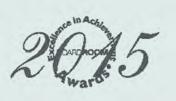

































Advertising/Printing
EG Communications
6750 N. Andrews Avenue
Fort Lauderdale, FL 33309
Tel: (954) 958-0338 Fax: (954) 928-2801
Website: www.eurographics.com
Email: martin@eurographics.com
Contact: Martin Marinov, president
Attorneys
Addison Law Firm
14901 Quorum Drive, Ste. 650 Dallas, TX 75254
Tel: (972) 960-8677 Fax: (972) 960-7719
Website: www.addisonlaw.com
Email: clublaw@addisonlaw.com
Contact: Randolph Addison, president
Club Advisory Services
Club Consultants LLC
5121 Castello Drive, Suite 1 Naples, FL 34103
Tel: (239) 643-7800 Fax: (239) 643-7803
Website: www.clubconsultants.com
Contact: Bill Wernersback, sr. mng. dir.
Club Neckties, Scarves, Emblems
Stratton-Crooke Enterprises Inc.
P. O. Box 215-H
Scarsdale, NY 10583
Tel: (800) 732-9719 Fax: (914) 725-5196
Website: www.strattoncrooke.com
Email: StrattonCrooke@aol.com
Contact: Nancy & Jim Crooke
Club Services
HFTP
11709 Boulder Lane, STE 110
Austin, TX 78726-1832
Tel: (512) 249-5333 Fax: (512) 249-1533
Website: www.hftp.org
Email: Laura.Huffman@hftp.org
Contact: Laura Huffman
Clubhouse Design
Chambers
100 Decker Drive, Suite 140
Irving, TX 75062
Tel: (972) 253-3583 Fax: (972) 259-9664
Website: cciclubdesign.com
Chambers 1800 Washington Blvd., Suite 111
Baltimore, MD 21230
Tel: (410) 727-4535 Fax: (410) 727-6982
Website: www.chambersusa.com
Email: jsnellinger@chambersusa.com
Contact: John R. Snellinger
Peacock + Lewis Architects
1295 US Highway One
North Palm Beach, FL 33408
Tel: (561) 626-9704 Fax: (561) 626-9719
Website: www.peacocklewis.com
Email: Brian@peacocklewis.com
Contact: Brian Idle
Clubhouse Architect
Judd Brown Designs
700 School Street
Pawtucket, RI (401) 721-0977
Contact: Peter Cafaro
H. Anne Blakely Sciarrone Architecture
P.O. Box 357
Decatur, GA 30031
(678) 632-2663
Contact: Anne Sciarrone
Clubhouse Furniture
Eustis Chair
P.O. Box 842
Ashburnham, MA 01430
Tel: (978) 827-3103 Fax: (978) 827-3040
Web site: www.eustischair.com
E-Mail: fred@eustischair.com
Contact: Fred Eustis
Gasser Chairs
4136 Logan Way
Youngstown, OH 44505
Tel: (330) 759-2234 Fax: (330) 759-9844
Web site: www.gasserchair.com
Email: ksmith@gasserchair.com
Contact: Kevin Smith
Global Allies
625 DuBois Street, #A
San Rafael, CA 94901
Tel: (877) 208-7185 Fax: (415) 453-6042
Web site: www.globalallies.com
Contact: David Cline
Construction
Parkway Construction
1000 Civic Circle
Lewisville, TX 75067
(972) 221-1979
Website: www.parkwayconstruction.com
Course Architects
George Golf Design, Inc.
609 Twin Ridge Lane
Richmond, VA 23235
Tel: (804) 272-4700 Fax: (804) 272-4771
Website: www.georgegolfdesign.com
Contact: Lester George, course architect
Consulting
Clubwise Consulting
3507 Dunlin Shore Court Norcross, GA 30092 (770) 248-1047
Contact: Jerry McCoy
Email: Cmaamcm@msn.com
Denehy Club Thinking Partners
501 Kings Highway East 06825 (203) 319 8228
Website: www.denehyctp.com
Contact: Dan Denehy
McMahon Group
670 Mason Ridge Center Drive , Suite 220
St. Louis, MO 63141
Tel: (800) 365-2498
Website: www.mcmahongroup.com
E-Mail: info@mcmahongroup.com
Course Maintenance
International Golf Maintenance, Inc. (IGM) 8390
Champions Gate Blvd #200 Champions Gate, FL 33896
Tel: (800) 413-5500 FAX: (407)589-7223
Website: www.igminc.net
Email: gregp@igminc.net
Contact: Greg A. Plotner CGCS, EVP
The Toro ® Company 8111 Lyndale Ave S Bloomington, MN 55343
Tel: (800) 803-8676 Fax: (952) 887-8693
Website: www.toro.com
Email: Turfequipment@toro.com
Executive Search Firms
GSI Executive Search, Inc.
Tampa Bay Office P.O. Box 55877
St. Petersburg, FL 33732
Tel: (727) 525-6562 Cell: (727) 366-0487
Website: www.gsiexecutivesearch.com
Email: dick@gsiexecutivesearch.com
Contact: Dick Farrell, Principal
GSI Executive Search, Inc. Northest Office
Rochester, NY
Tel: (518) 852-0986
Website: www.gsiexecutivesearch.com
Email: dan@gsiexecutivesearch.com
Contact: Dan Farrell, Senior Associate
GSI Executive Search, Inc. Midwest Office
231 S. Bemiston Ave. Suite 800 St.Louis, MO 63105
Tel: (314) 854-1321 Cell: (314) 452-8848
Website: www.gsiexecutivesearch.com
Email: scott@gsiexecutivesearch.com
Contact: Scott McNett, Principal Kopplin & Kuebler
Southwest Office
7349 Via Paseo Del Sur, Ste. 202 Scottsdale, AZ 85258
Tel: (480) 443-9102 Fax: (480) 443-9642
Website: www.kopplinandkuebler.com
Email: dick@kopplinandkuebler.com
Contact: Dick Kopplin, partner
Kopplin & Kuebler
East Coast Office
132 Tulip Tree Jupiter, FL 33458
Tel/Fax: (561) 747-5213
Cell: (407) 864-6798
Website: www.kopplinandkuebler.com
Email: kurt@kopplinandkuebler.com
Contact: Kurt Kubler, CCM, partner
Financial Services
Reserve Advisors, Inc.
205 E. Wisconsin Ave. Milwaukee, WI 53202
Phone: (414) 272-2002 Fax: (414) 272-3663
Website: www.reserveadvisors.com
Contact: Nik Clark
Food & Beverage Software
Culinary Software Services
1900 Folsom Street #210 Boulder, CO 80302
(303) 447-3334
FOOD-TRAK®/System Concepts, Inc.
15900 N. 78th Street
Scottsdale, AZ 85260
Tel: (480) 951-8011 x 8026
Fax: 480-951-2807
Email: nancys@foodtrak.com
Website: www.foodtrak.com
Contact: Nancy Shina, director of marketing
C2 Limited Design Associates
95 Reef Road
Fairfield, Connecticut 06824
Tel: (203) 259-2555 Fax: (203) 259-2565
Website: www.c2limited.com
Email: studio@c2limited.com
Contact: Craig J. Smith
Ferry, Hayes & Allen Designers, Inc.
1100 Spring Street, Suite 600
Atlanta, GA 30309
Tel: (404) 874-4411 Fax: (404) 874-1099
Website: www.fhadesigners.com
Email: jbarret@fhadesigners.com
Contact: Jeff Barrett, executive vice president
HINT | Harris Interiors
49B Lenox Pointe
Atlanta, GA 30324
Tel: (404) 403-2931
Website: www.hintatlanta.com
Email: kelley@hintatlanta.com
Image Design, Inc.
3330 Cumberland Blvd.
Atlanta, GA 30339
Tel: (770) 952-7171 Fax: (770) 933-9093
Website: www.imagedesign.com
Email: mfleming@imagedesign.com
Internet Domain
.CLUB Domain
100 SE 3rd Avenue
Fort Lauderdale, FL 33394
Tel: (877) 833-0000
Website: www.nic.club
E-Mail: info@nic.club
Insurance
GAB Robins
3300 W. Lake Mary Blvd, Suite 350 Lake Mary, FL 32746
Tel: (800) 248-3376
Website: www.gabvalue.com
E-Mail: service@gabvalue.com
Kitchen & Banquet
Spring USA
127 Ambassador Drive #147 Naperville, IL 60540 (630) 527-8600
Website: www.springusa.com
Locker Room Suppliers
Sports Solutions, Inc.
2536 Manana Drive
Dallas, TX 75220
Tel: (800) 969-8008 Fax: (214) 351-2609
Website: www.sportssolutionsinc.com
Email: sales@sportssolutionsinc.com
Contact: Laurie Schmidt
Planglow
899 Montreal Circle
Saint Paul, MN 55102
Tel: (800) 774-0536 #1
Website: www.Planglow-usa.com
E-Mail: jason@planglow-usa.com
Lockers
Salsbury Industries - Lockers.com
1010 East 62nd Street
Los Angeles, CA 90001
Tel: (800) LOCKERS Fax: (800) 562-5399
Website: www.Lockers.com
Email: Salsbury@Lockers.com
Outdoor Furniture
Bambrella
6464 East Rogers Circle
Boca Raton, FL 33487
Tel: (561) 288-8655
Website: www.Bambrella.com
E-Mail: info@Bambrella.com
Xhibtz Contract Furnishing
11071 Indian Lake Circle
Boynton Beach, FL 33437
Tel: (954) 614-1505
Fax: (888) 880-9124
Website: www.xhibtz.com
Email: xhibtz1@bellsouth.net
Purchasing Group
Essensa
555 West 57th St., 12th Floor
New York, NY 10019
Tel: (866) 430-5330
Website: www.Essensa.org
E-Mail: essensainfo@essensa.org
BOARDROOM
c2 Design limited.
caDDIemaSTer.
Research & Data
Club Benchmarking
PO Box 2082
New Castle, NH 03854 (603) 553-8958
Signera
20140 Scholar Drive, Suite 314 Hagerstown, MD 21742
Tel: 877-998-7446 ext. 10
Fax: 301-850-3353
Website: www.signera.net
Contact: Michael Sparks
Culinary Software Services 1900 Folsom Street #210 Boulder, CO 80302 (303) 447-3334
37 chambers.
clubessential.
clubster.
clubtec.
concert golf partners.
creative golf marketing
DeI kitchen.
Denehy.
Distinguished clubs.
DWa Uniforms.
epic golf Insurance Services.
eustis chair.
event equipment Sales.
Ferry, hayes & allen Designers.
gasser chair.
FOOD-Trak.
25
24
8
Spa
Luxury Spa Sales
6601 Lyons Road, Suite D8
Coconut Creek, FL 33073
Tel: (800) 220-8646
Website: www.LuxurySpaSales.com
E-Mail: Spa@LuxurySpaSales.com
Technology
FOOD-TRAK®/System Concepts, Inc. 15900 N. 78th Street
Scottsdale, AZ 85260
Tel: (480) 951-8011 x 8026
Fax: 480-951-2807
Email: nancys@foodtrak.com
Website: www.foodtrak.com
Contact: Nancy Shina, director of marketing
Northstar 161 Kimball Bridge Road #200 Alpharetta, GA 30009
Website: www.globalnorthstar.com
Polar
2046 Castor Avenue
Philadelphia, PA 19134
Tel: (800) 831-7823 Fax: (215) 535-6971
Website: www.the-polar.com
Email: bradk@the-polar.com
Contact: Brad Karasik
Walco Stainless/Utica Cutlery 820 Noyes St. Utica, NY 13503
Tel: (800) 879-2526 Fax: (315) 798-3757
Email: susan@uticacutlery.com
Website: www.uticacutlery.com
Contact: Susan Martin
High End Uniforms 5442 Gateway Plaza Drive Benicia, CA 94510 (707) 746-7011
27
grigg Brothers.
high end Uniforms.
hilda allen real estate.
hInT harris Interiors.
James g. rogers.
kemperSports.
kopplin & kuebler.
marsh & associates (maI).
mcmahon group.
pcpS.
pga.
reid
rSm.
Salsbury.
Spring USa.
Sports Solutions.
Strahl.
Troon golf.
xhibtz.
chris Boettcher, gm/cOO, Burlingame country club near San Francisco, ca.
13
23 graybar.
Susan greene, director of membership and marketing, The Oaks club in Osprey, Fl
nancy levenberg, member, Spring lake country club, Spring lake, michigan
macDonald niven, gm, la rinconada country club, los gatos, ca
george kervern, director of course and grounds, St. andrews country club, Boca raton, Fl
Dr. Bonnie knutson, the country club of lansing and the michigan athletic club
Jennifer Webster O’connor, pga head professional, northland country club, Duluth, mn
pilar Oldham, youth director, palo alto golf and country club, palo alto, ca
gregg patterson, gm, The Beach club of Santa monica, ca
Brian roth, Oquirrh hills golf course, Tooele, Utah
rosie Slocum, director of membership, BallenIsles country club, palm Beach gardens, Fl
Tom Tempel, president, The country club of crystal coast, pine knoll Shores, nc
Brenda Tilley, president, Scarboro golf club, Toronto, Ontario, canada
chuck Wibby, president, Boulder country club, Boulder, cO
Jeff Wilson, superintendent, Bandon Dunes golf course, Bandon, Oregon
Dirk Zander, gm, palo alto golf and country club, palo alto, ca
chris Zugell, cgcS at Whistling Straits, kohler, WI
